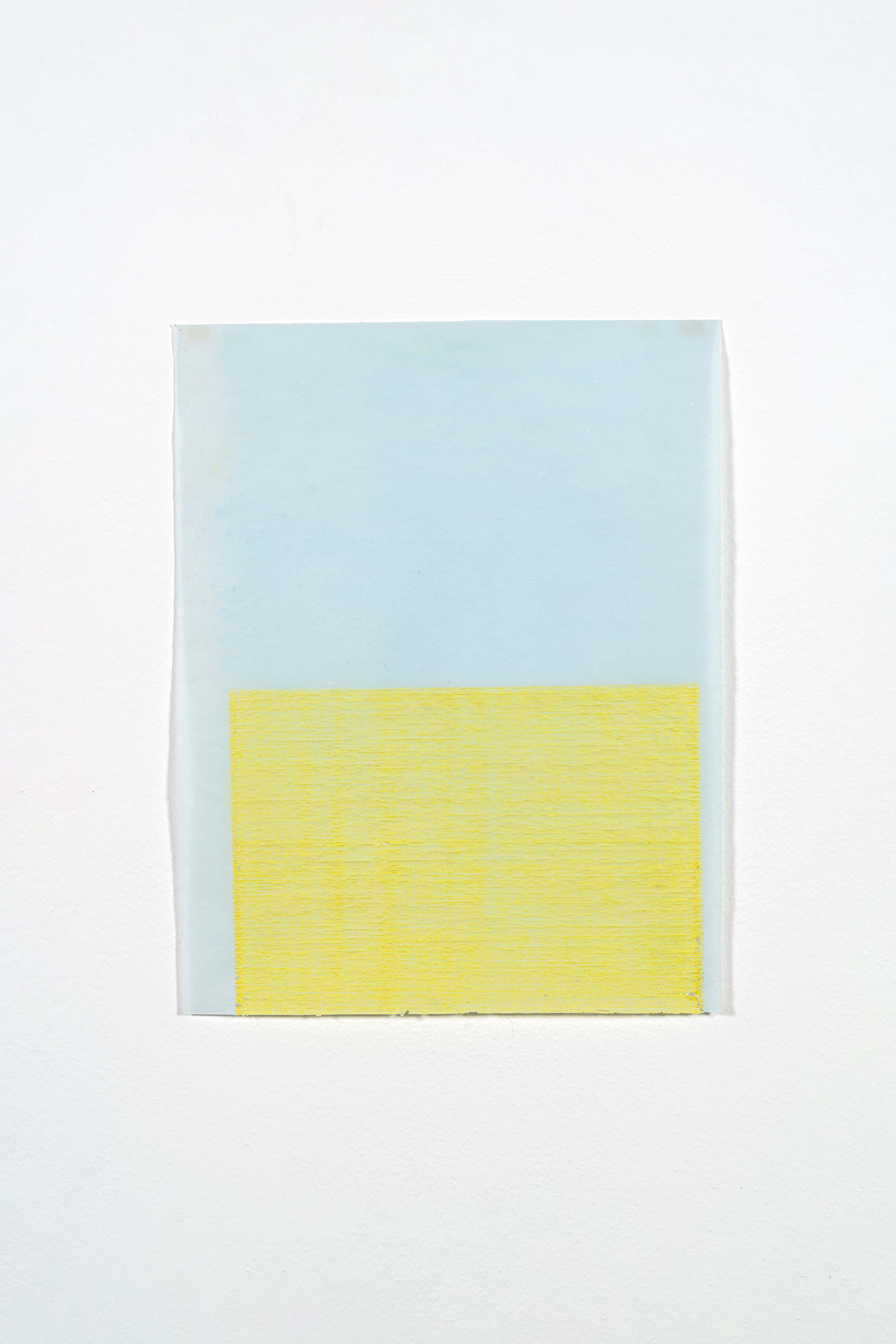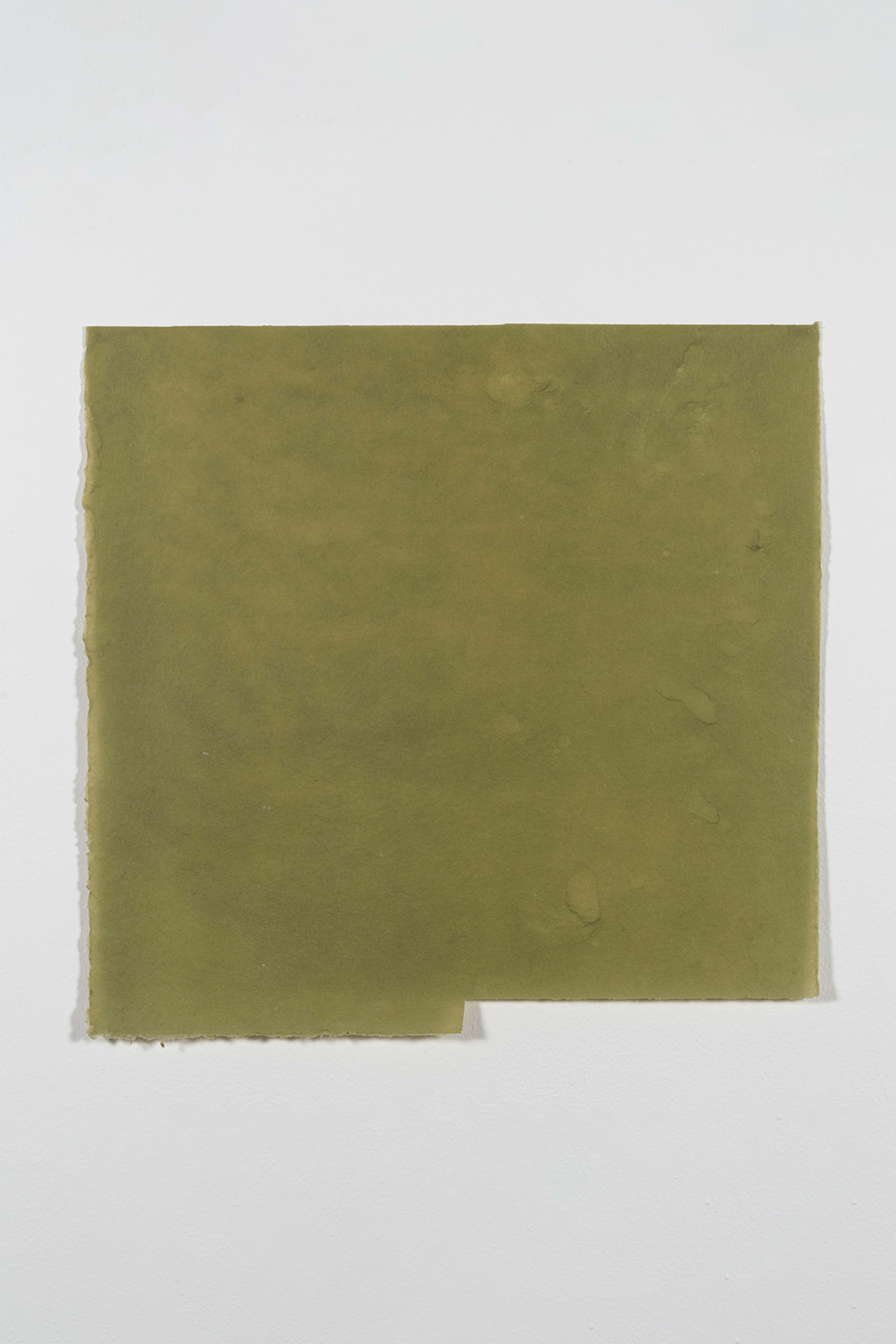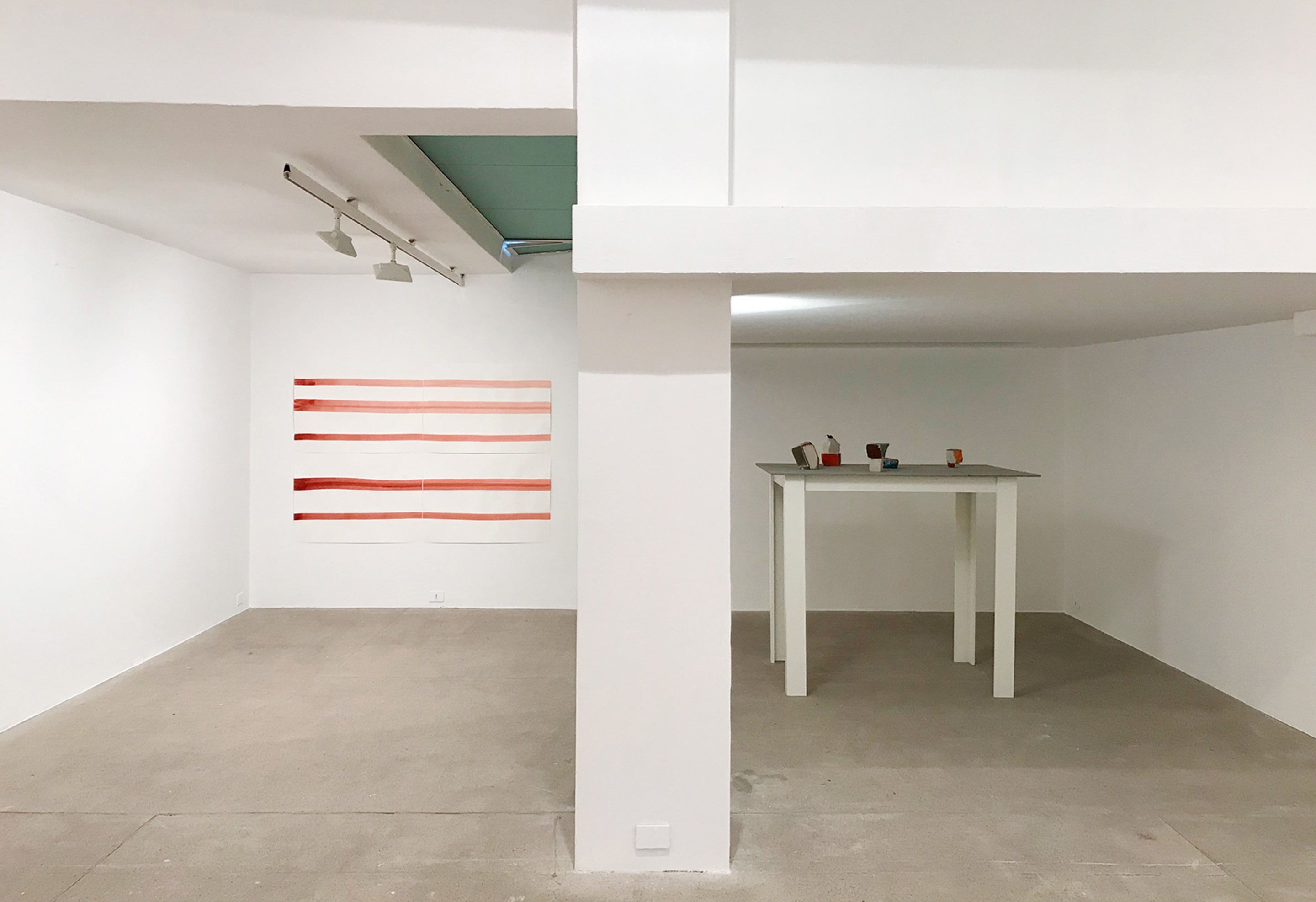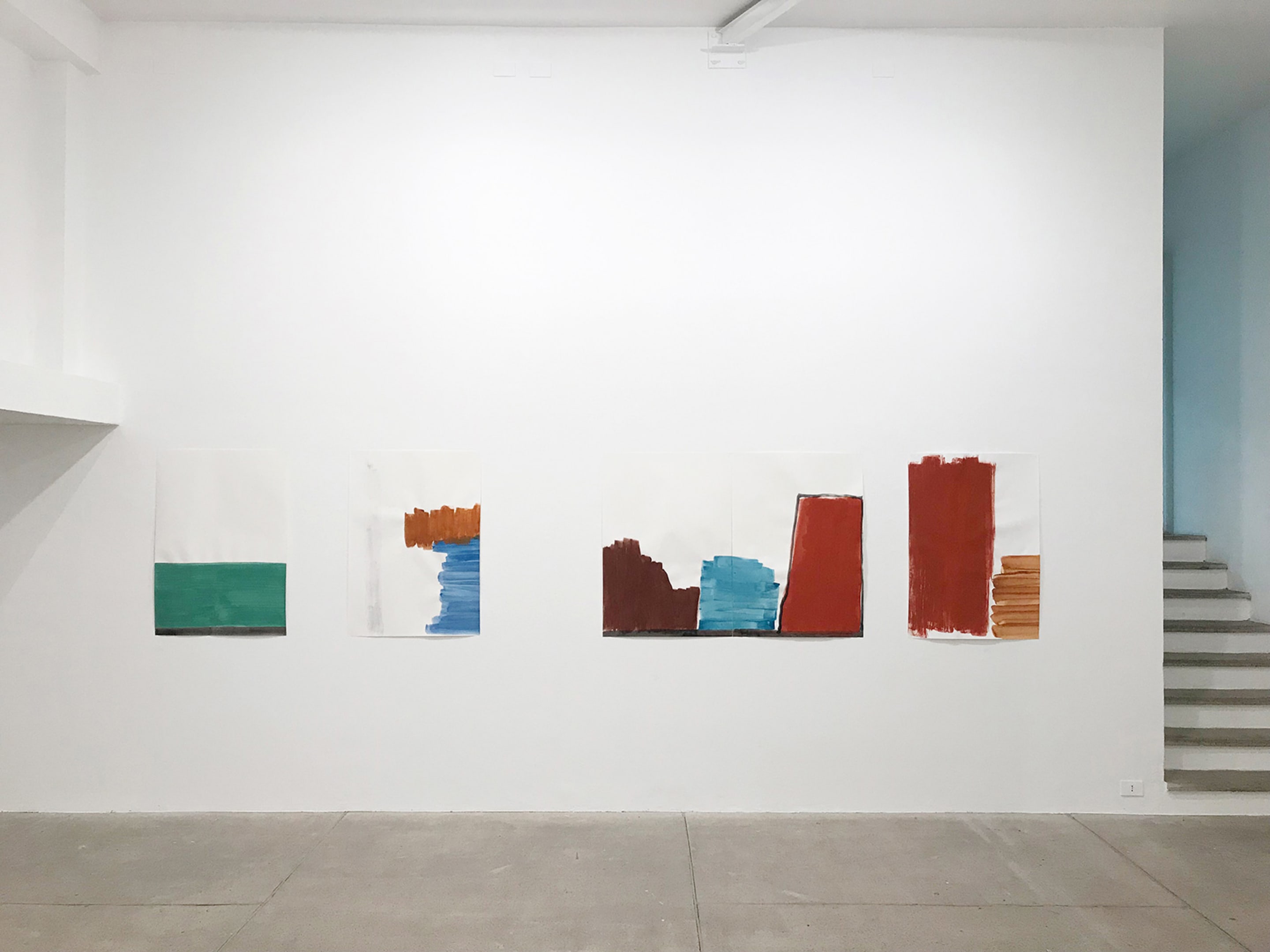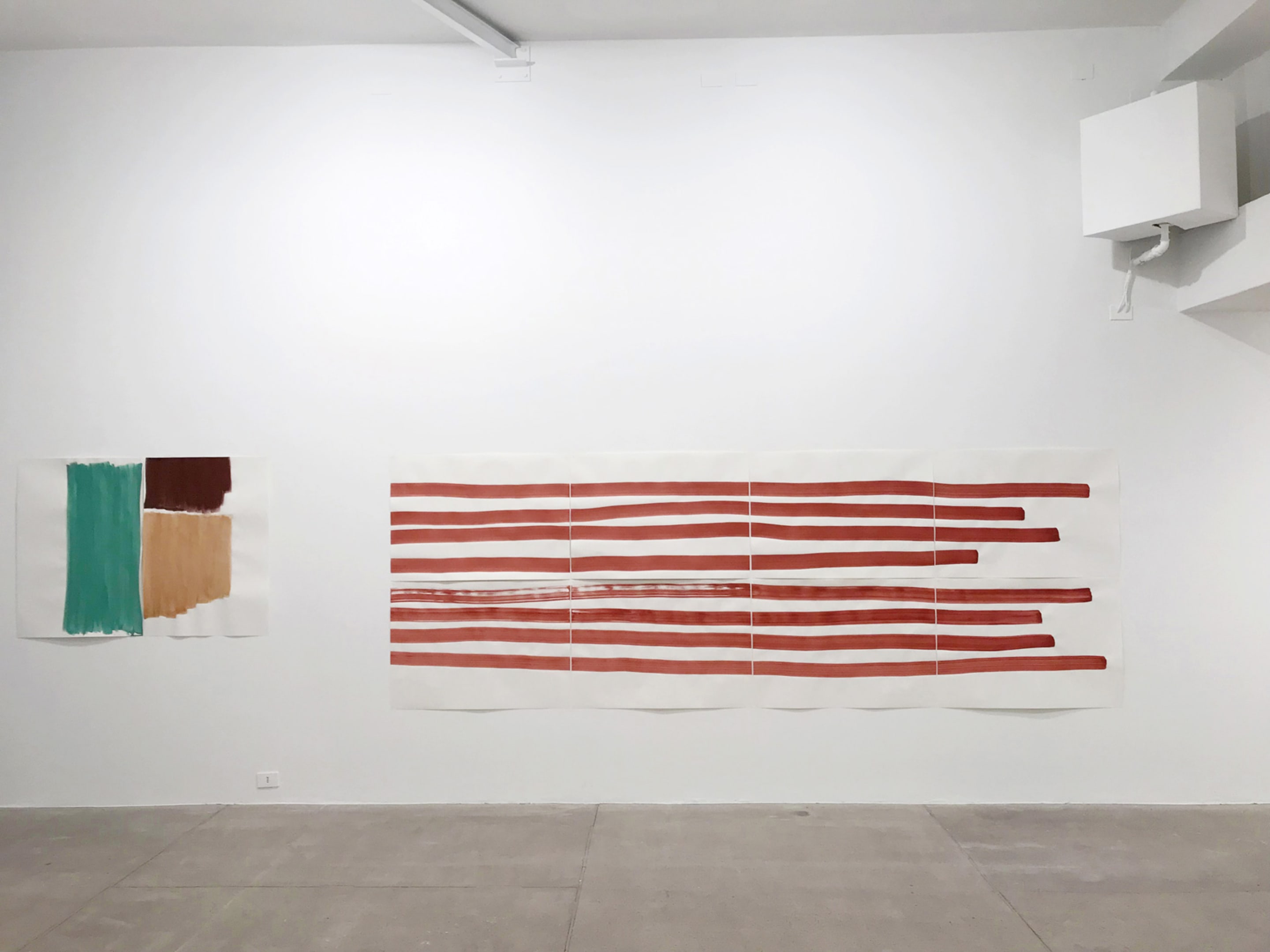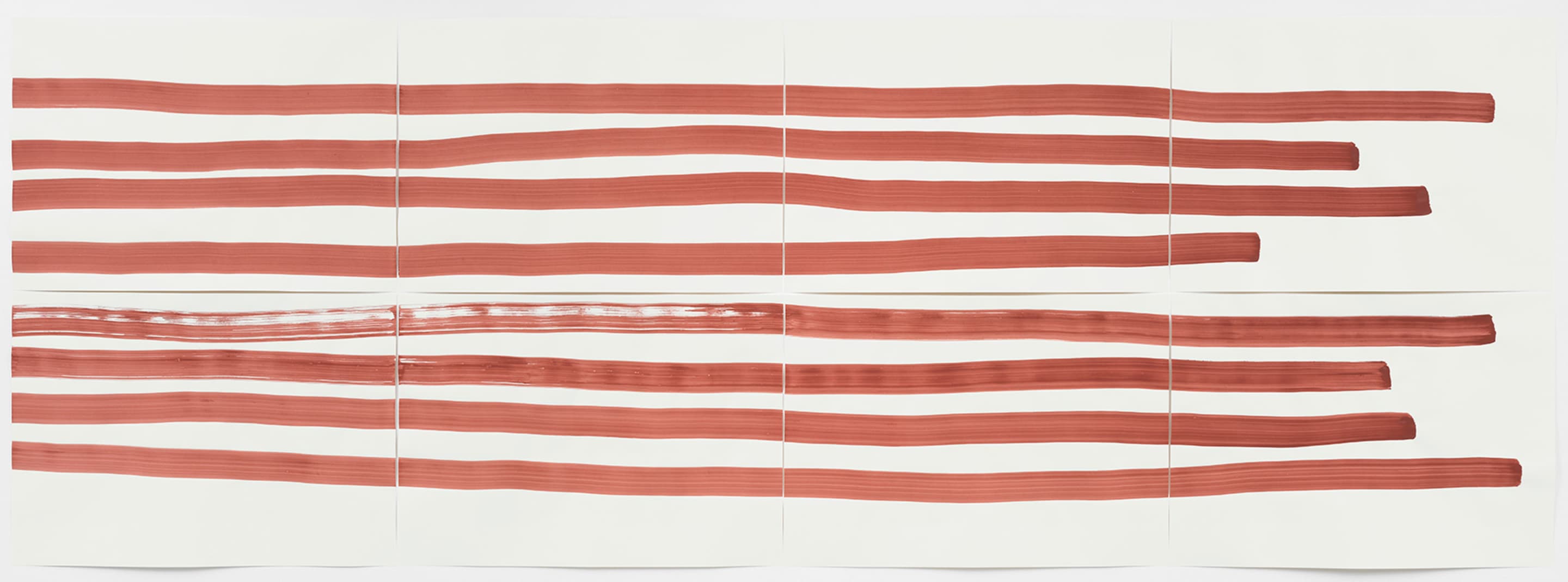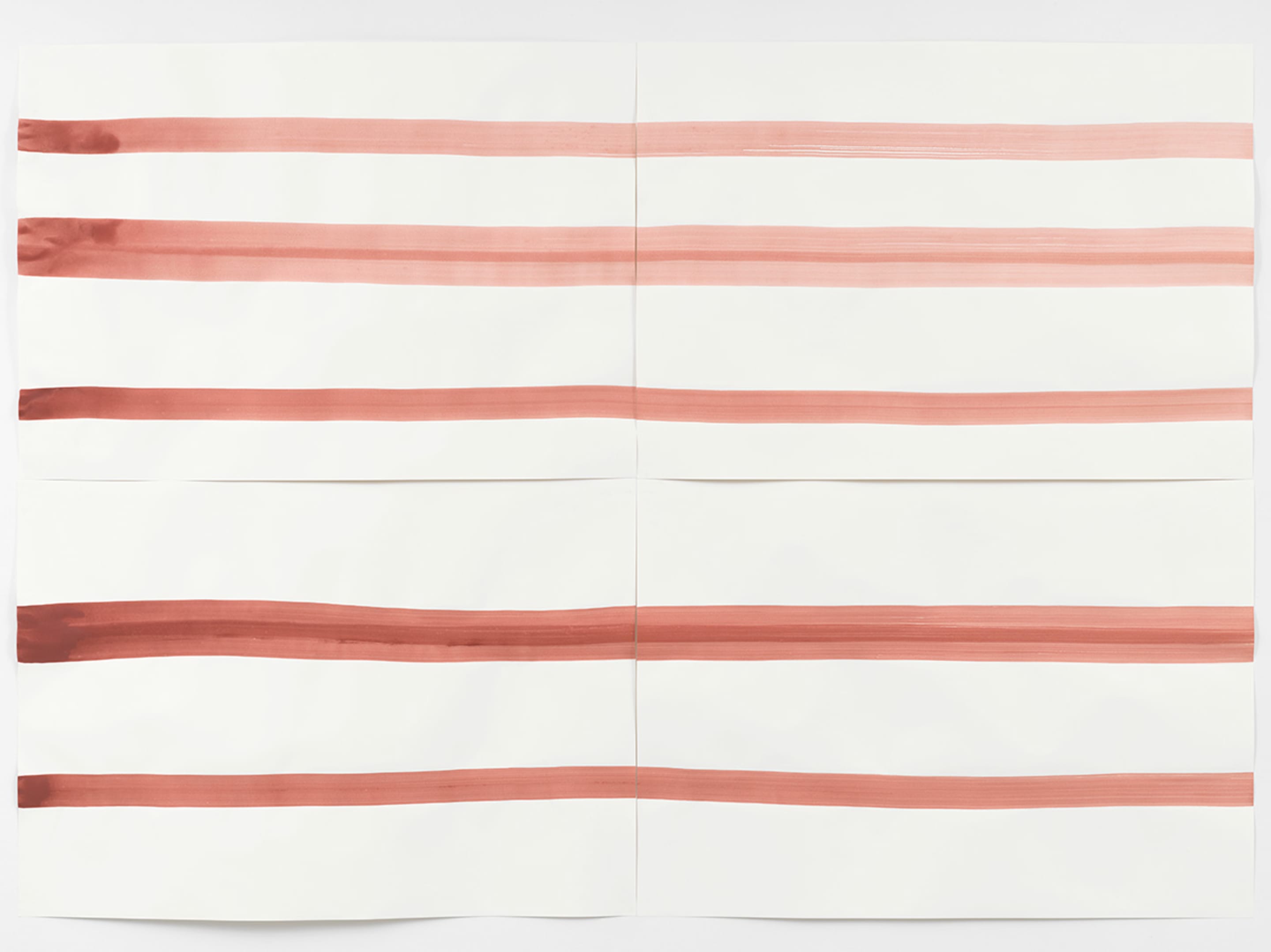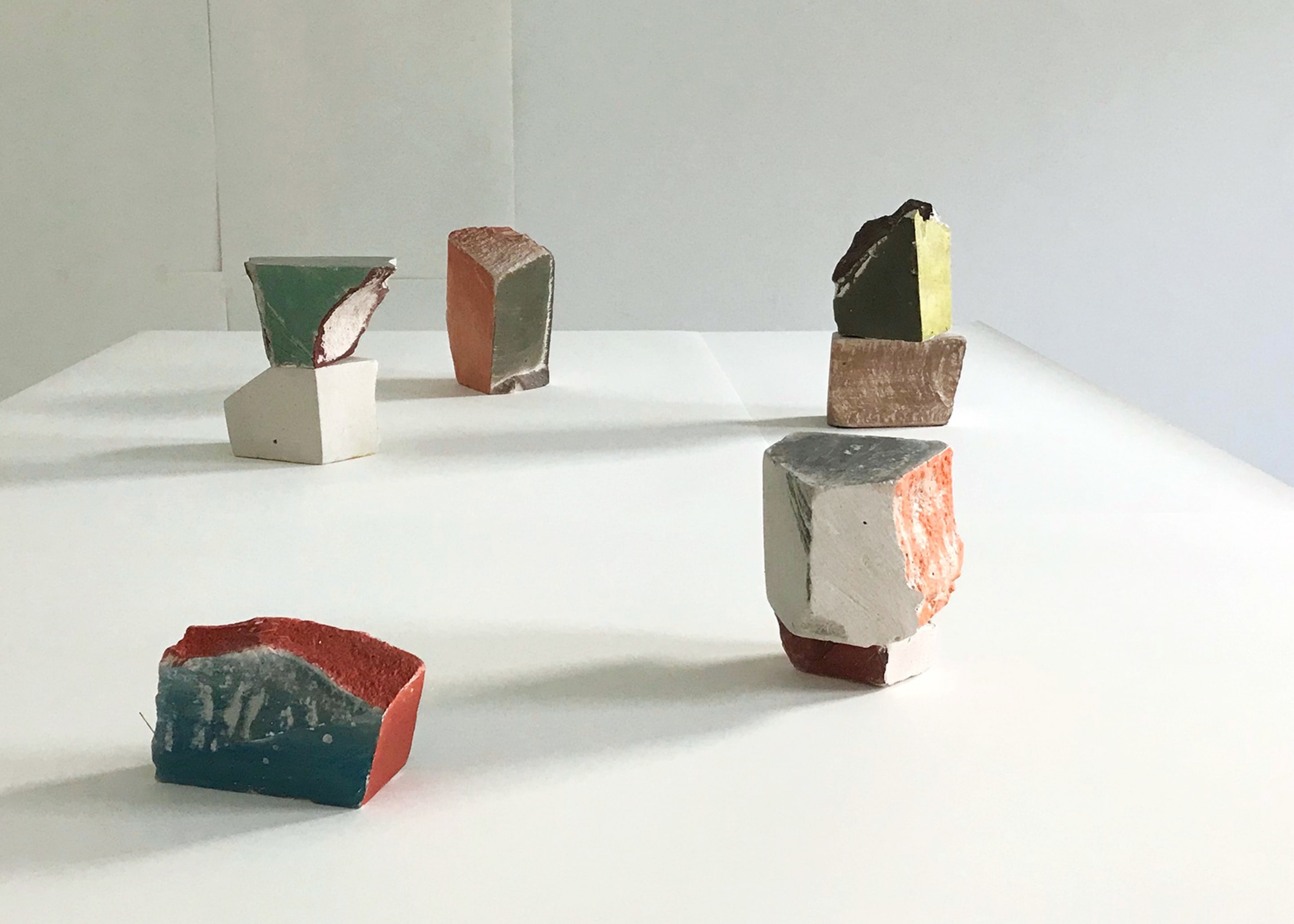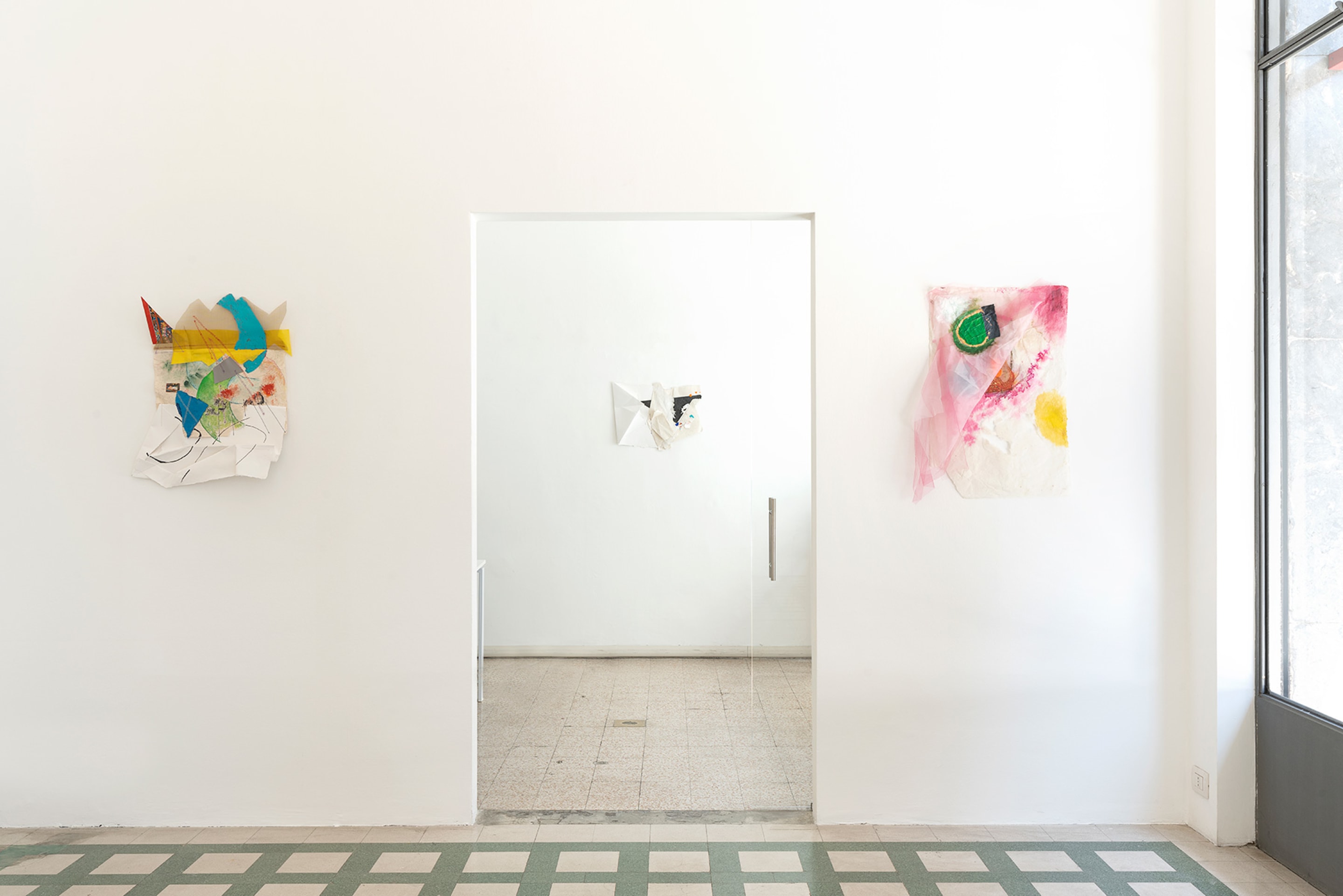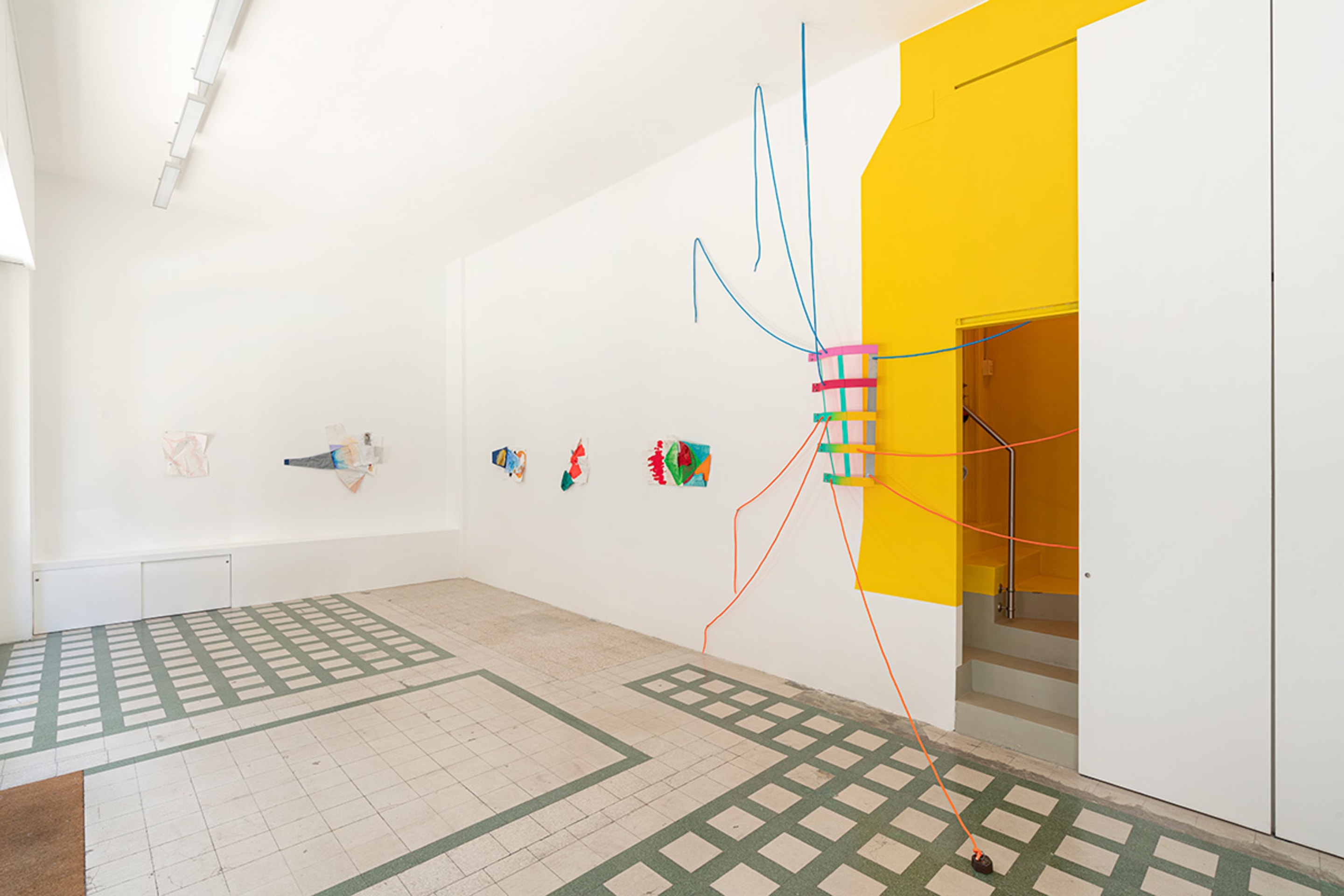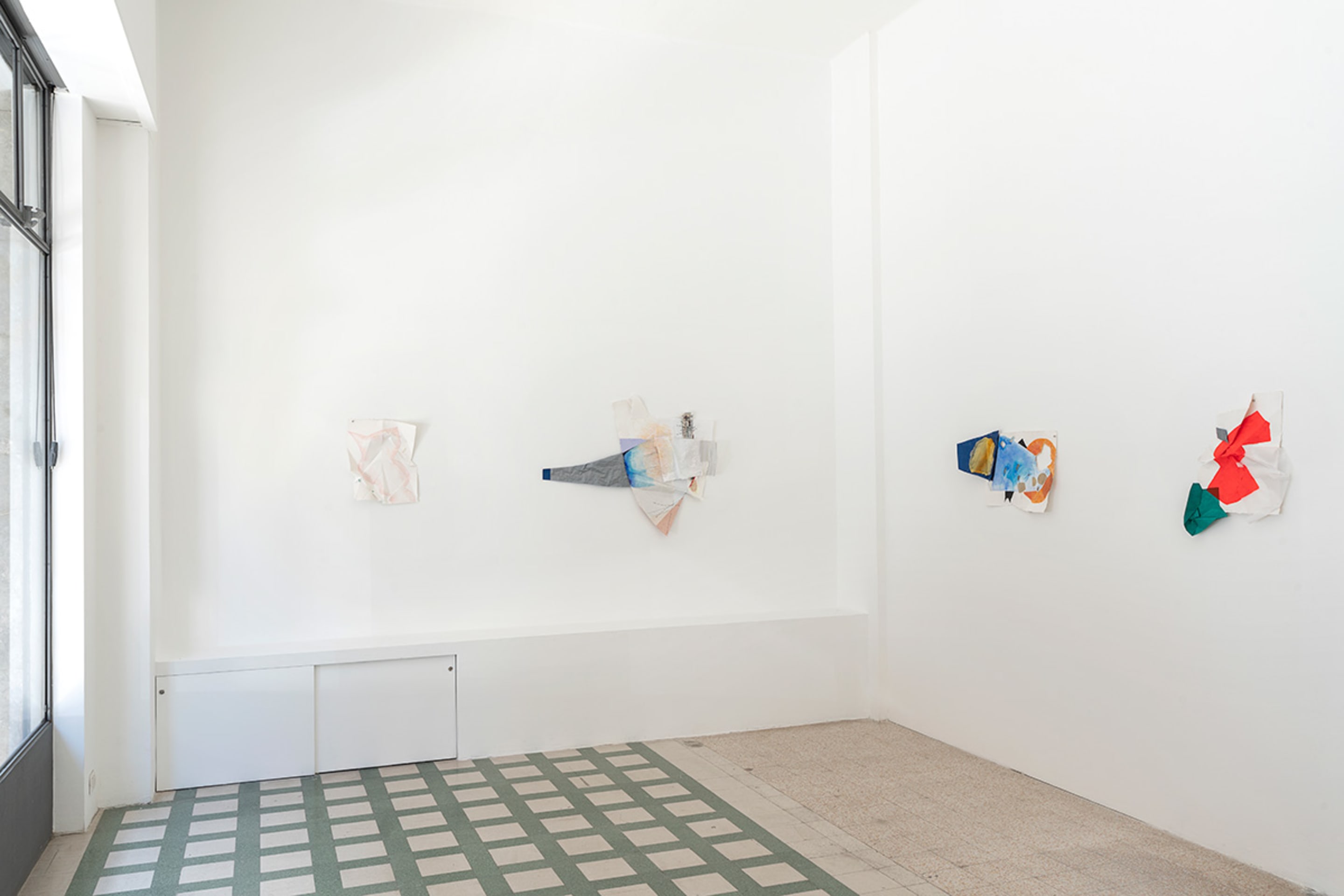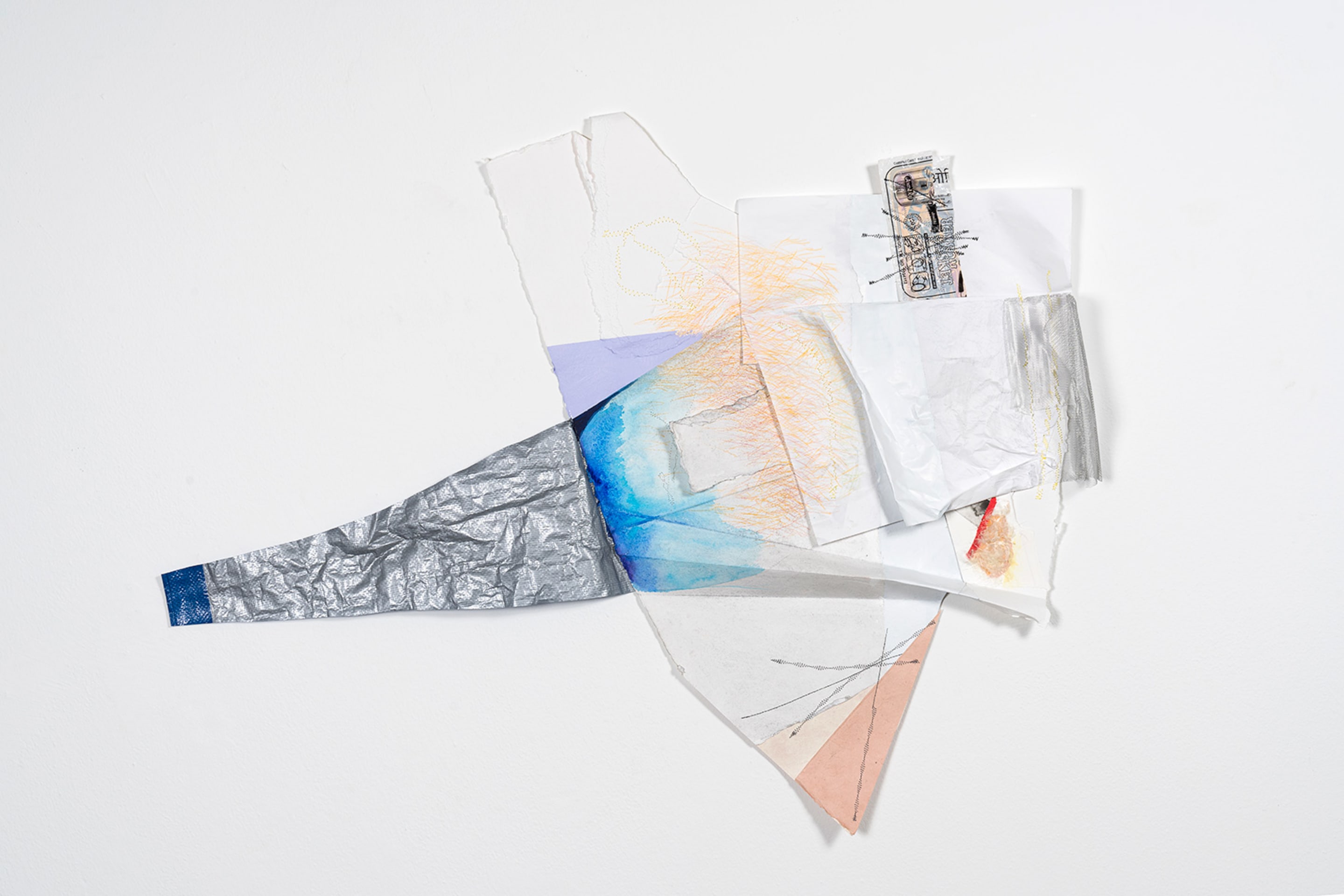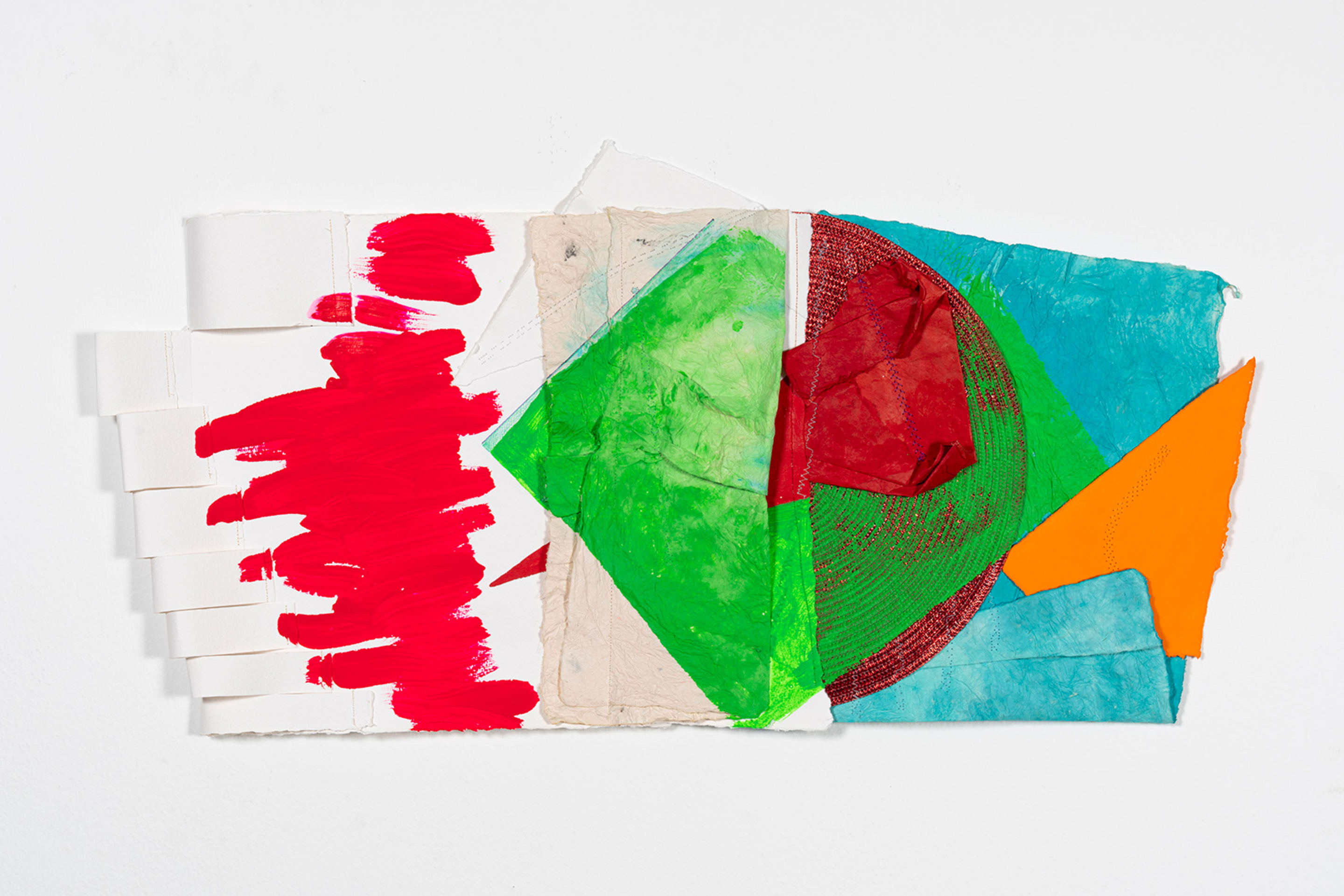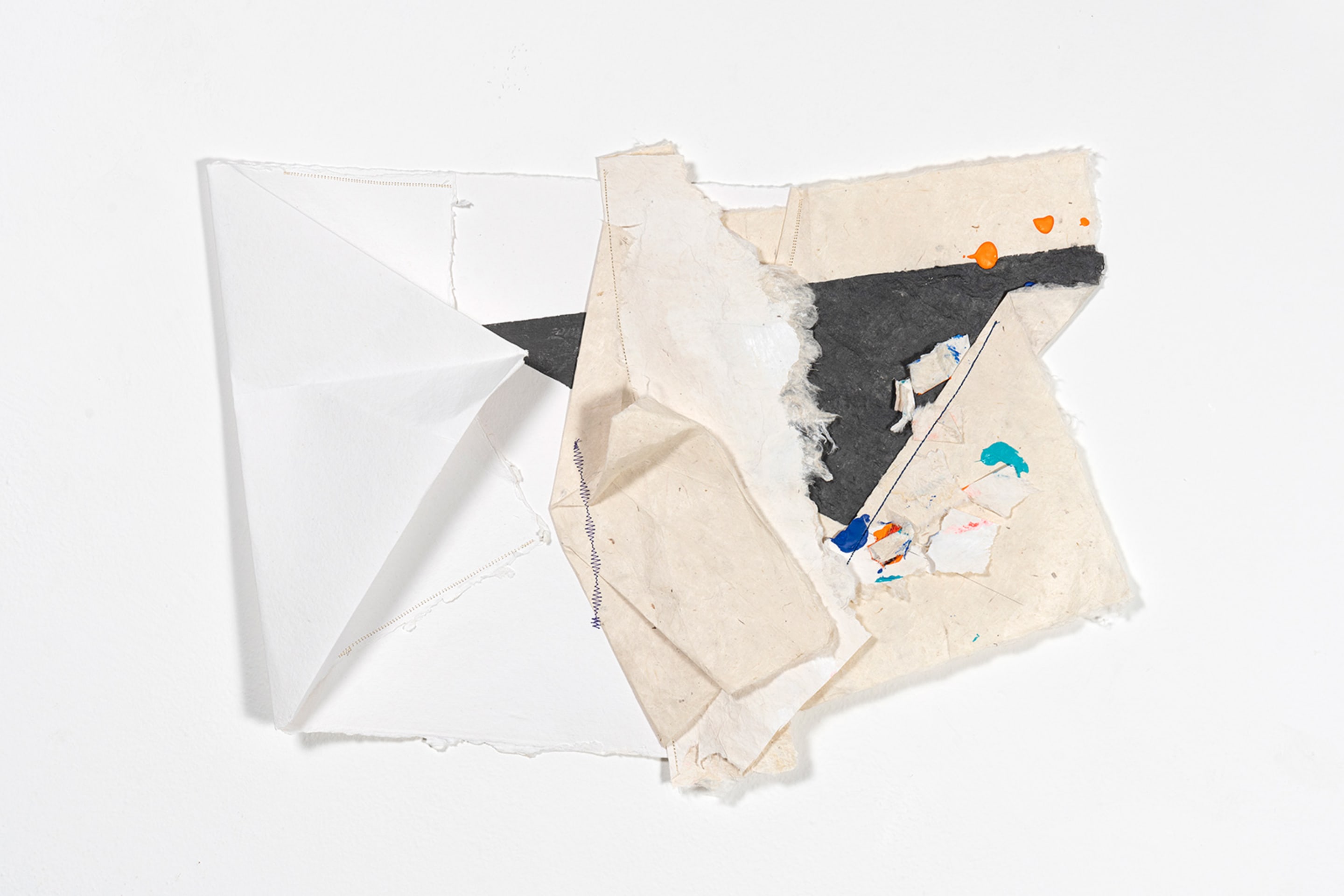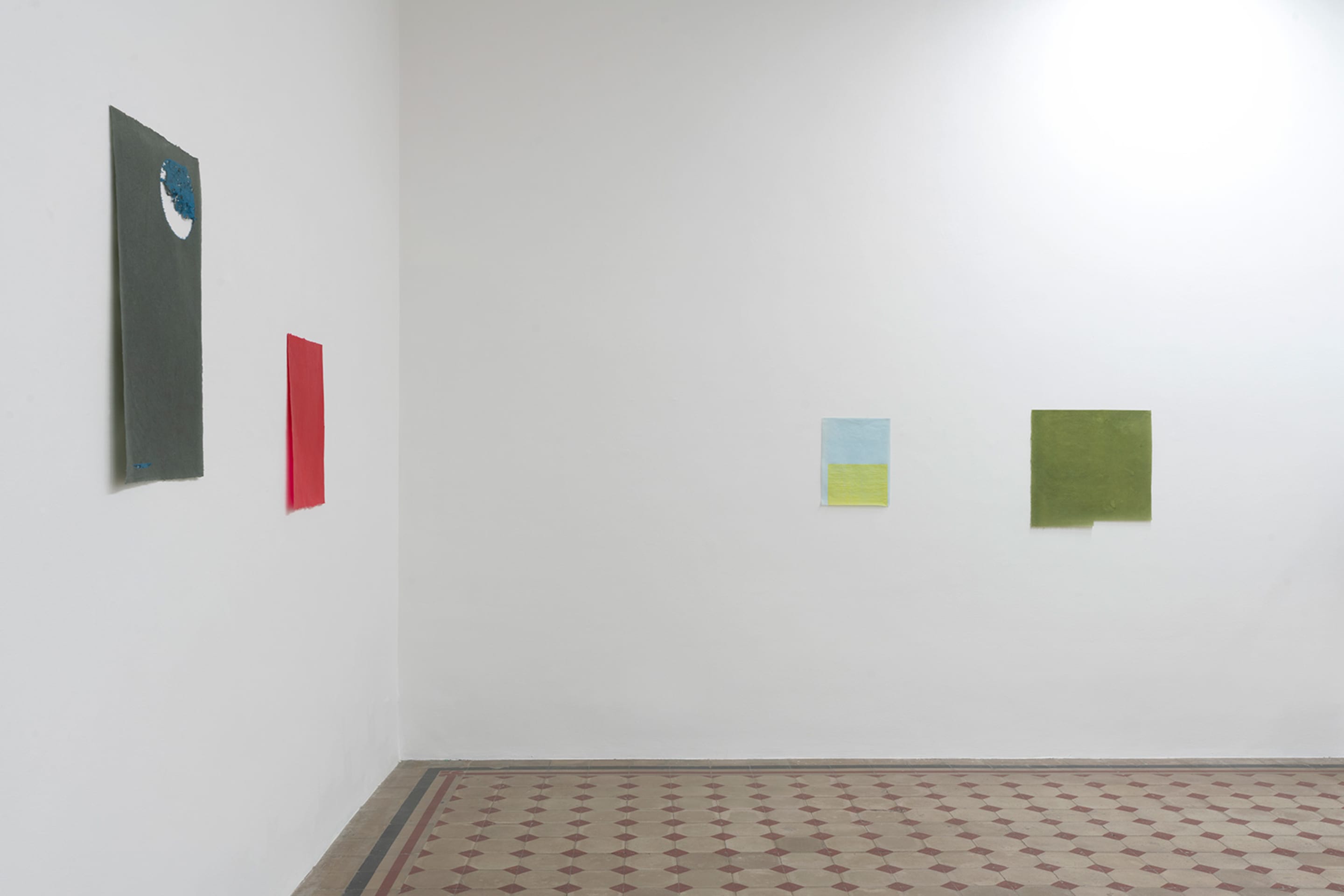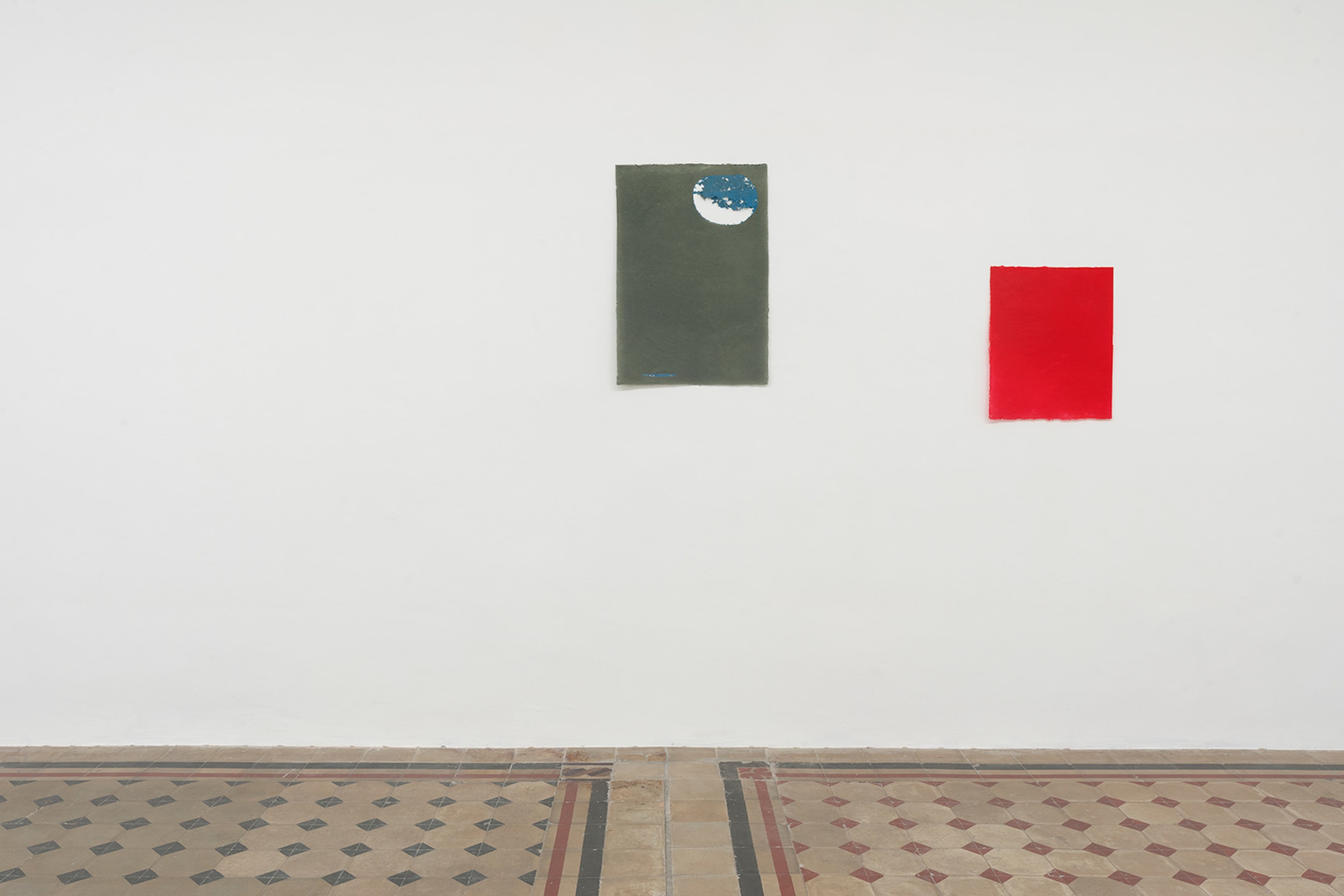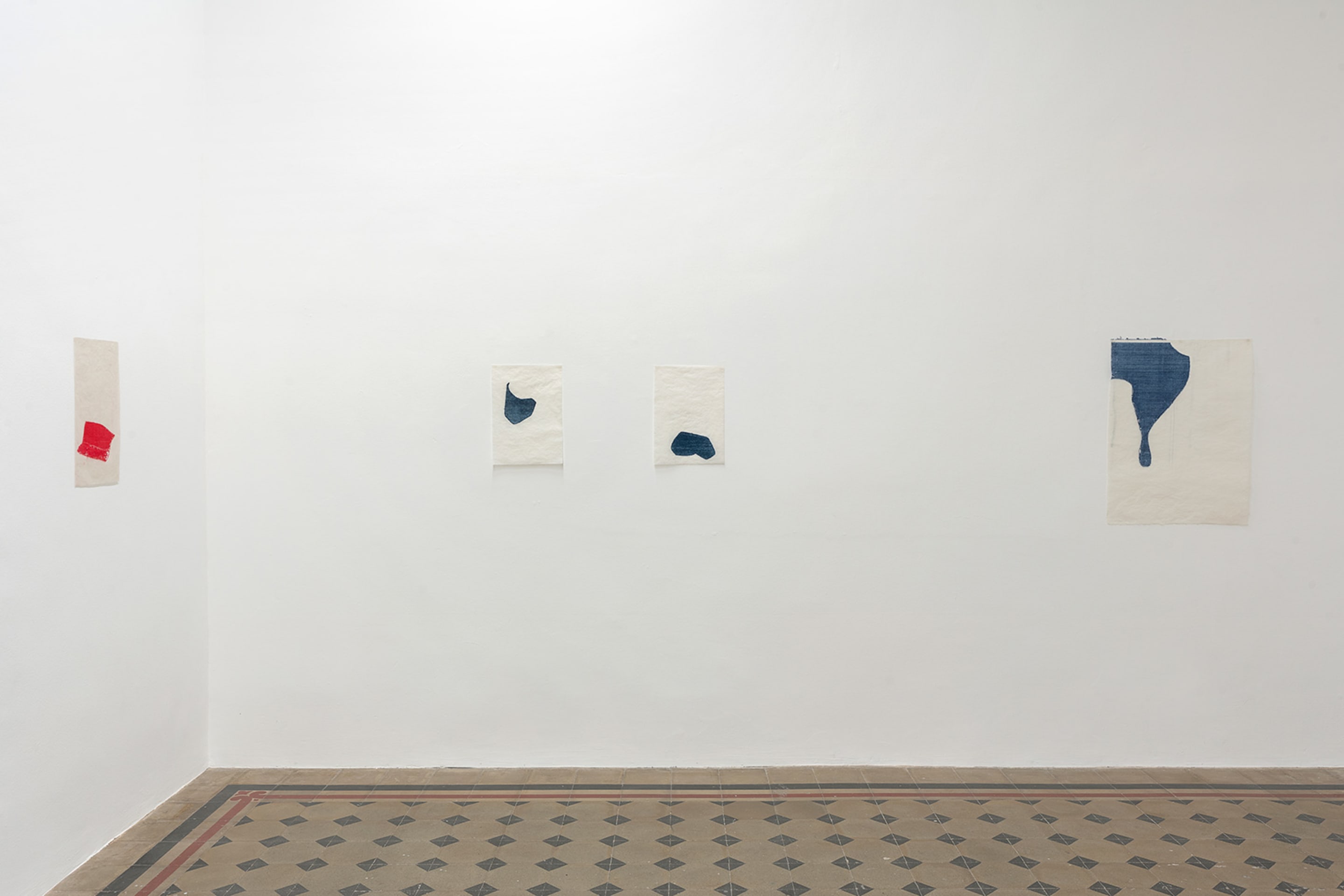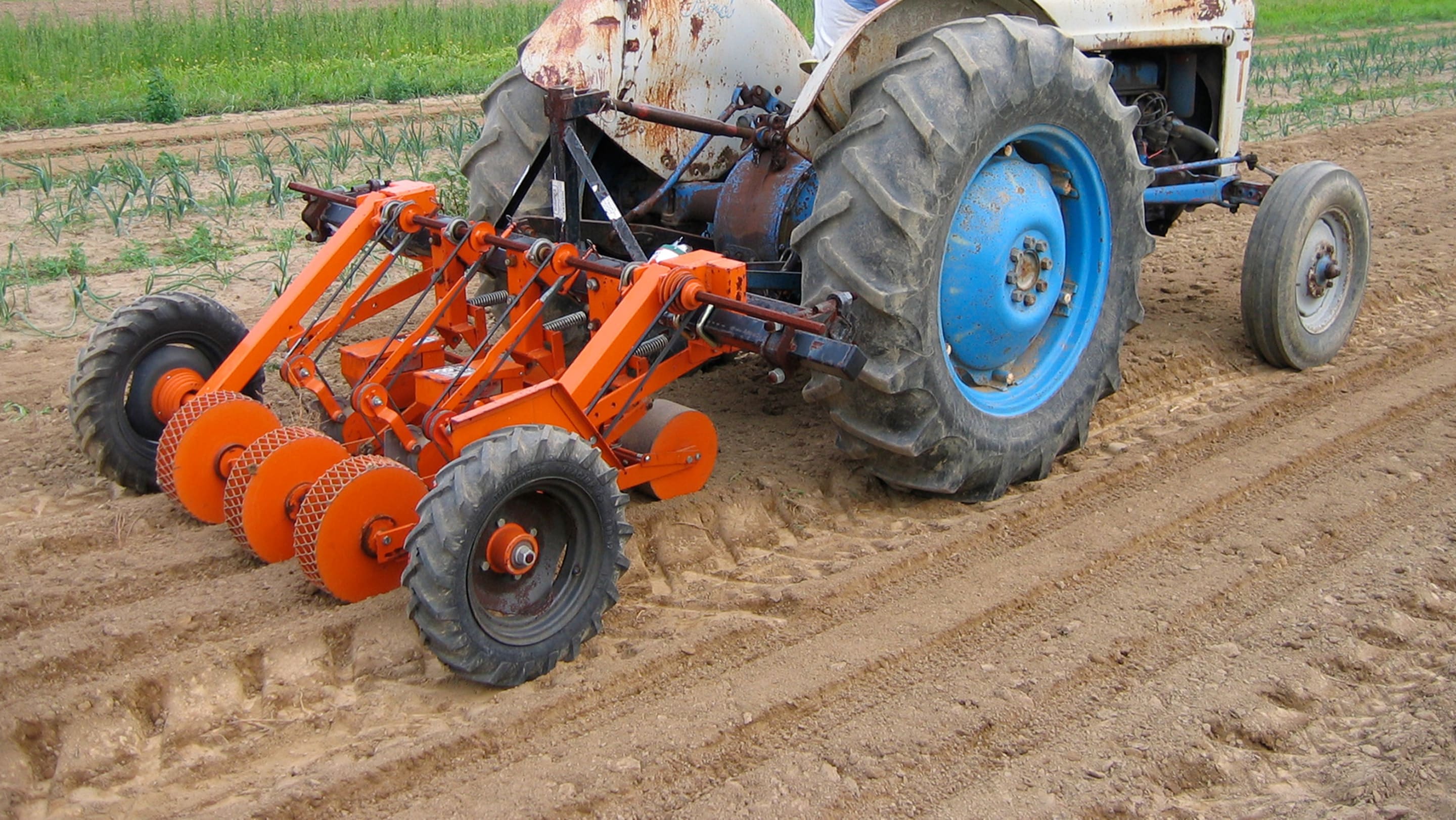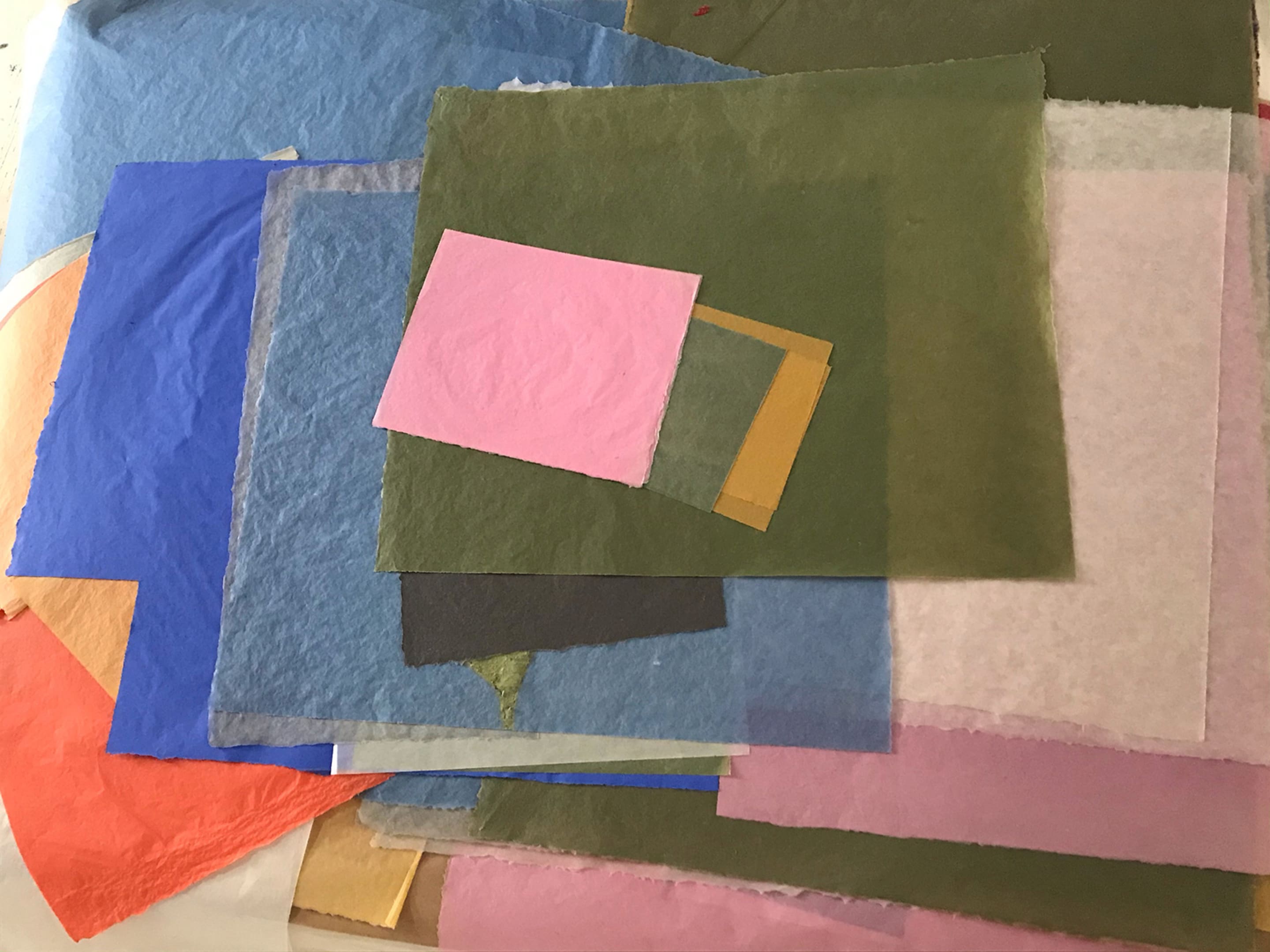Exhibition expanded
We are delighted to present an online viewing room exploring the exhibitions on view at Galleria Raffaella Cortese from May 20 to August 28, 2021, featuring previously unseen texts, images, and materials. Drawing is the protagonist and common thread between the three solo shows by Silvia Bächli, Jessica Stockholder, and Allyson Strafella. Each artist has developed their own drawing practice differently, but with the shared desires to cross the boundaries of the sheet of paper, as well as overcome the limits of the frame and of the two-dimensional surface. The medium, in all three exhibitions, takes on a dimension of installation and expresses a desire for osmosis with the spaces it inhabits.
Silvia Bächli – verso
After decades of drafting her vision of the world on white sheets of paper of recurring sizes, testing their edges and their surfaces, Silvia Bächli has constructed a vocabulary of brushstrokes that have explored infinite degrees of the black and white and which have entered the world of the specificity of color. While the signs on the wall have always mattered as much as the blank spaces, for this exhibition Bächli investigates even further the surface of the wall that contains her language: for the first time at the gallery, and one of the very first ones in her practice, her drawings float freely, outside of their frames, in new compositions. Lines and larger fields of colors seem to trespass the dimensions of the drawings and merge with the white wall. Her drawings are actions, her lines tell stories. What happens when these meet? What words can describe these encounters? What musical scores could they compose?
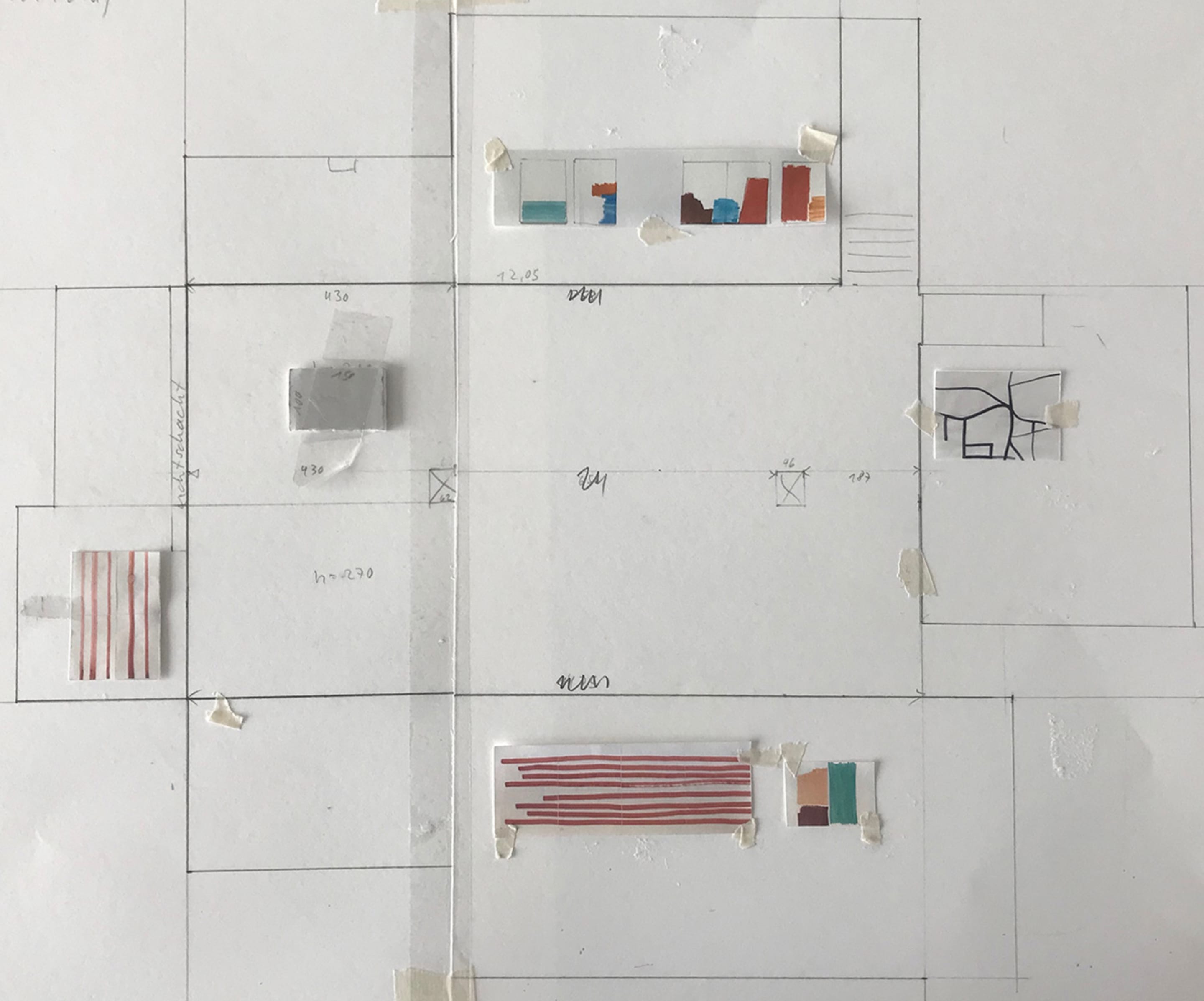
Photo: Silvia Bächli
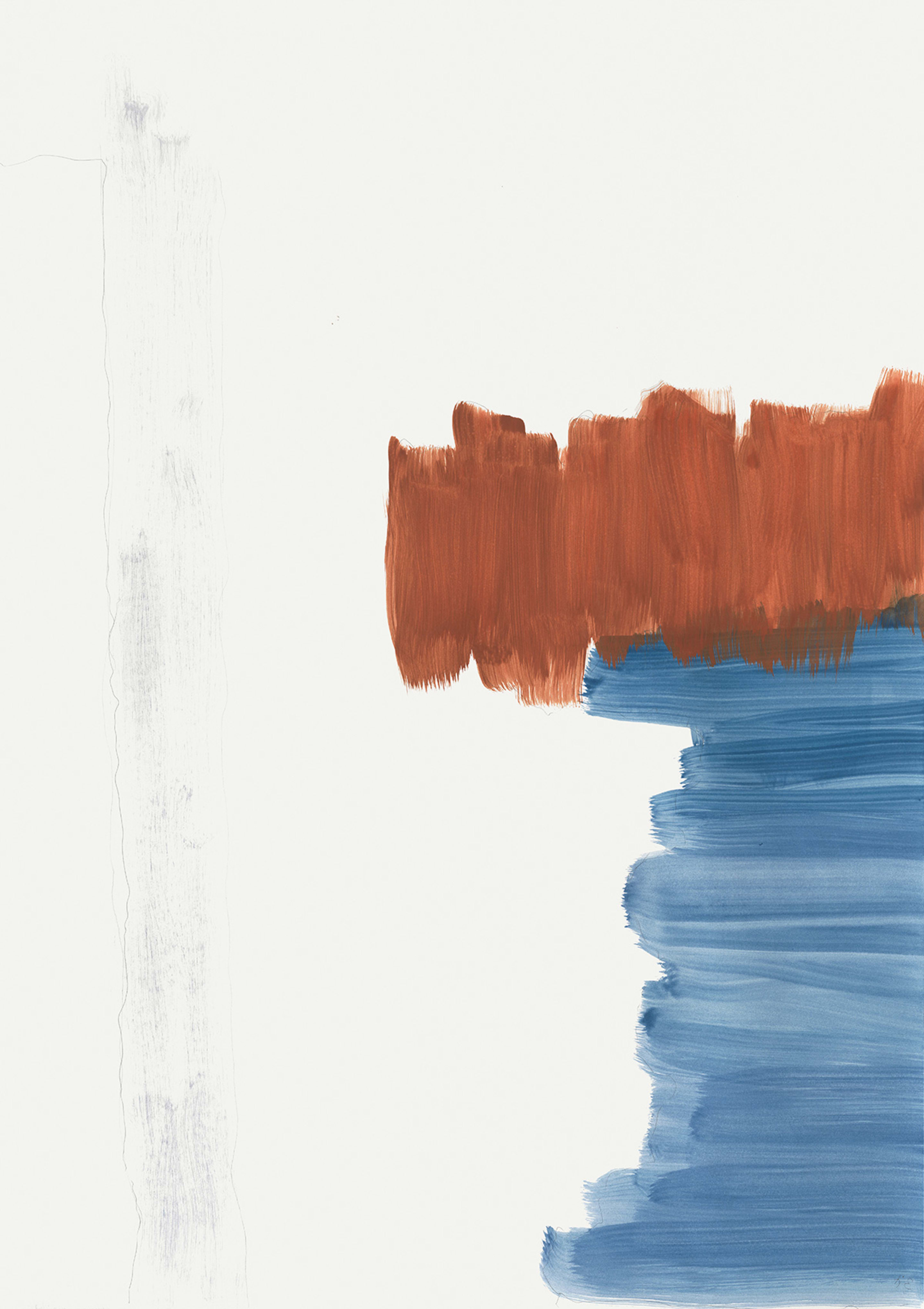
My work is the search for the right tone, for a formulation that is right, of which I do not know beforehand exactly what it will look like — this is what I would describe as my “doing”. In advance I only have a vague idea of where the path should go on paper, most of it is decided in the making. Between “what does the world look like” and remembering, playing, touching, inventing, approaching, eliciting, tinting, etc. — This is the field in which my works are created. Nameless and difficult to grasp in terms, but: in the best case they are a counterpart.
– Silvia Bächli, 2021
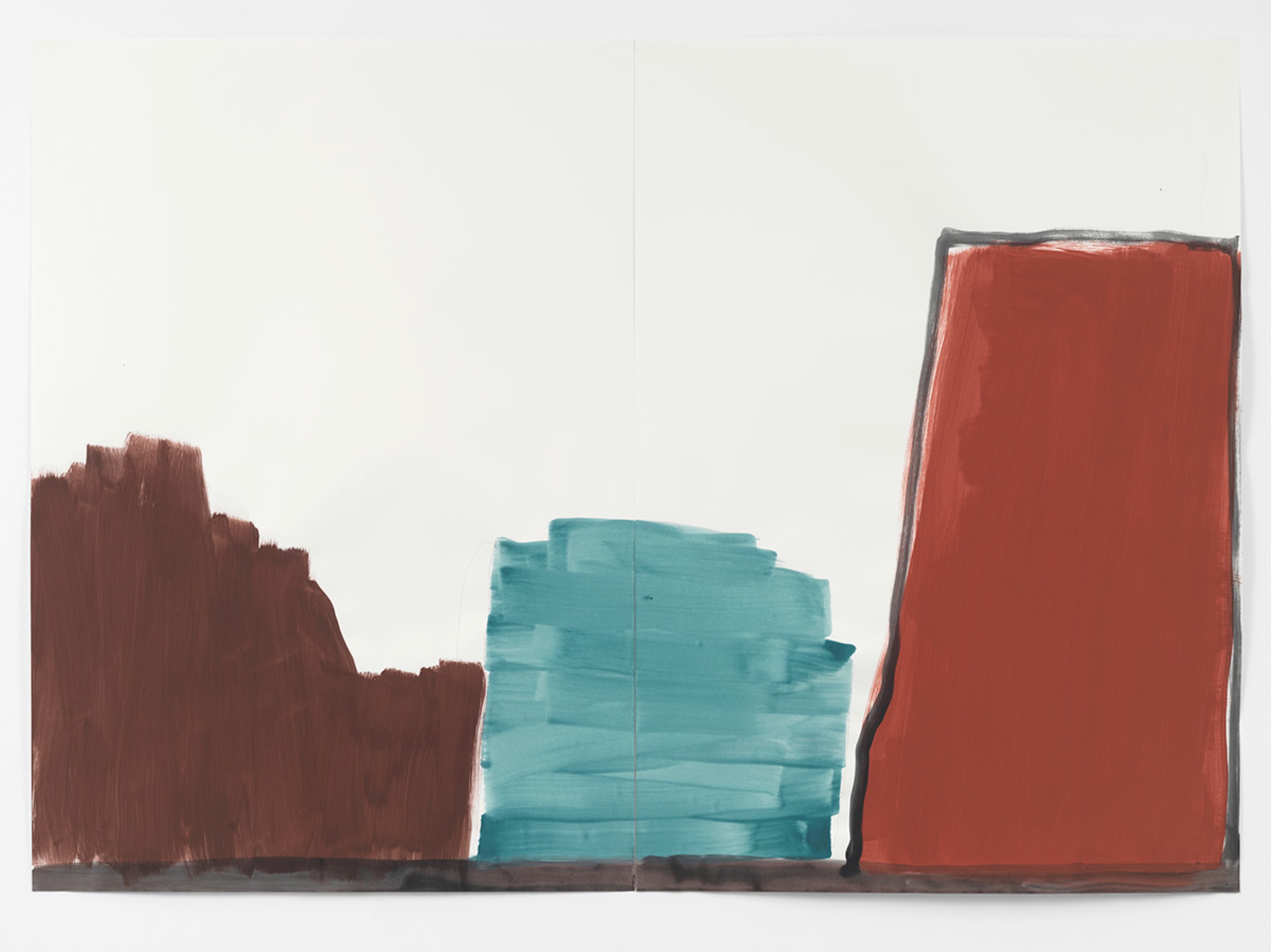
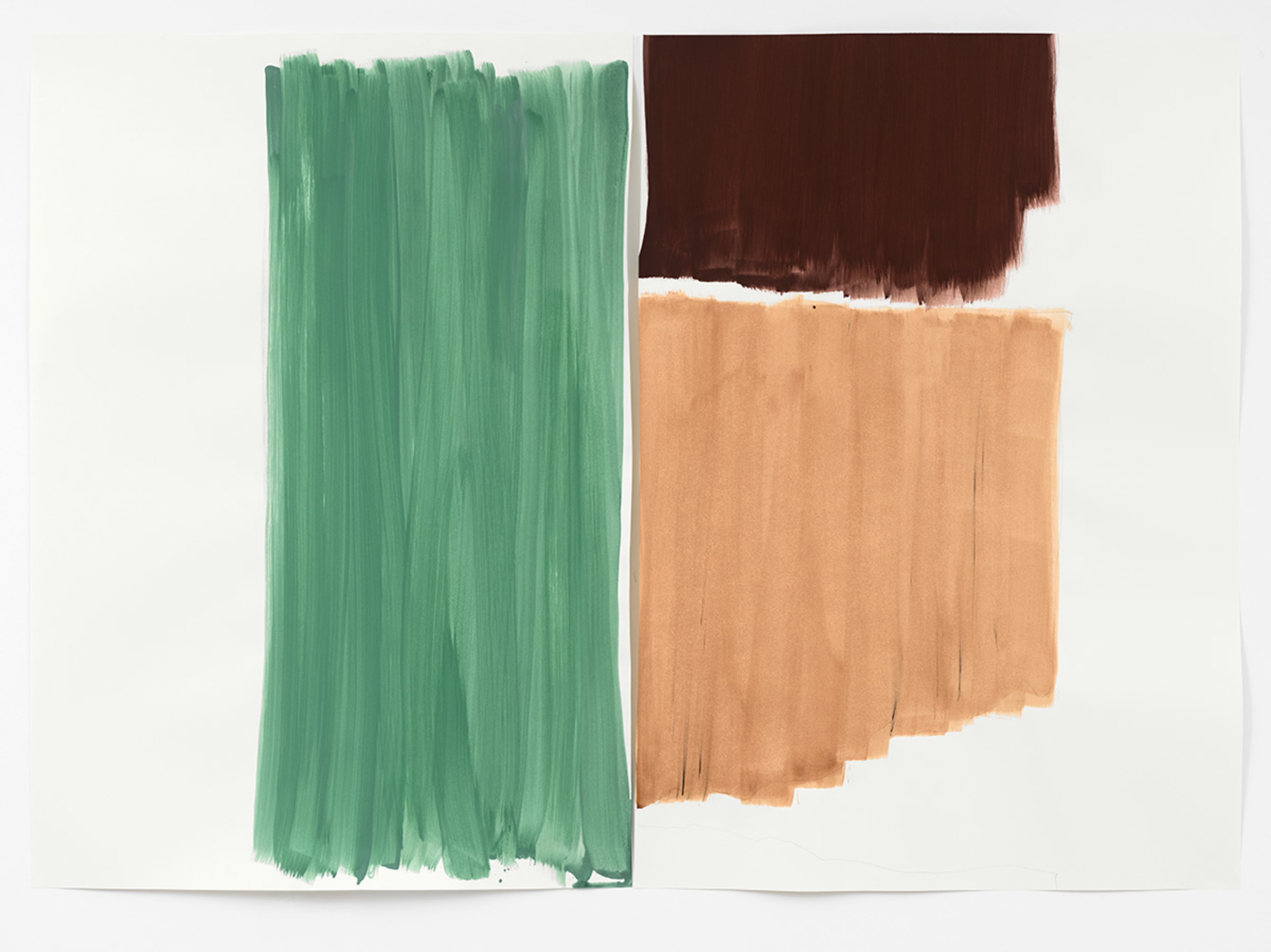
Drawings are actions. Lines tell stories. What do these lines do? Where is the beginning of a line, does it touch another line? How does it touch them? Words appear, which ones come to the tongue? The starting point for a drawing can be a close look, for example "what do the fingers of the left hand look like holding the drawing paper? – or I try to remember: "where did I run through yesterday on the way to shopping" – or "how does the knee feel right now?Drawing can be dancing with lines, like free improvised music. Allusions alternate with clearly legible representations. In the best case I discover something while working that is more correct, more surprising than my own imagination.
– Silvia Bächli, 2021
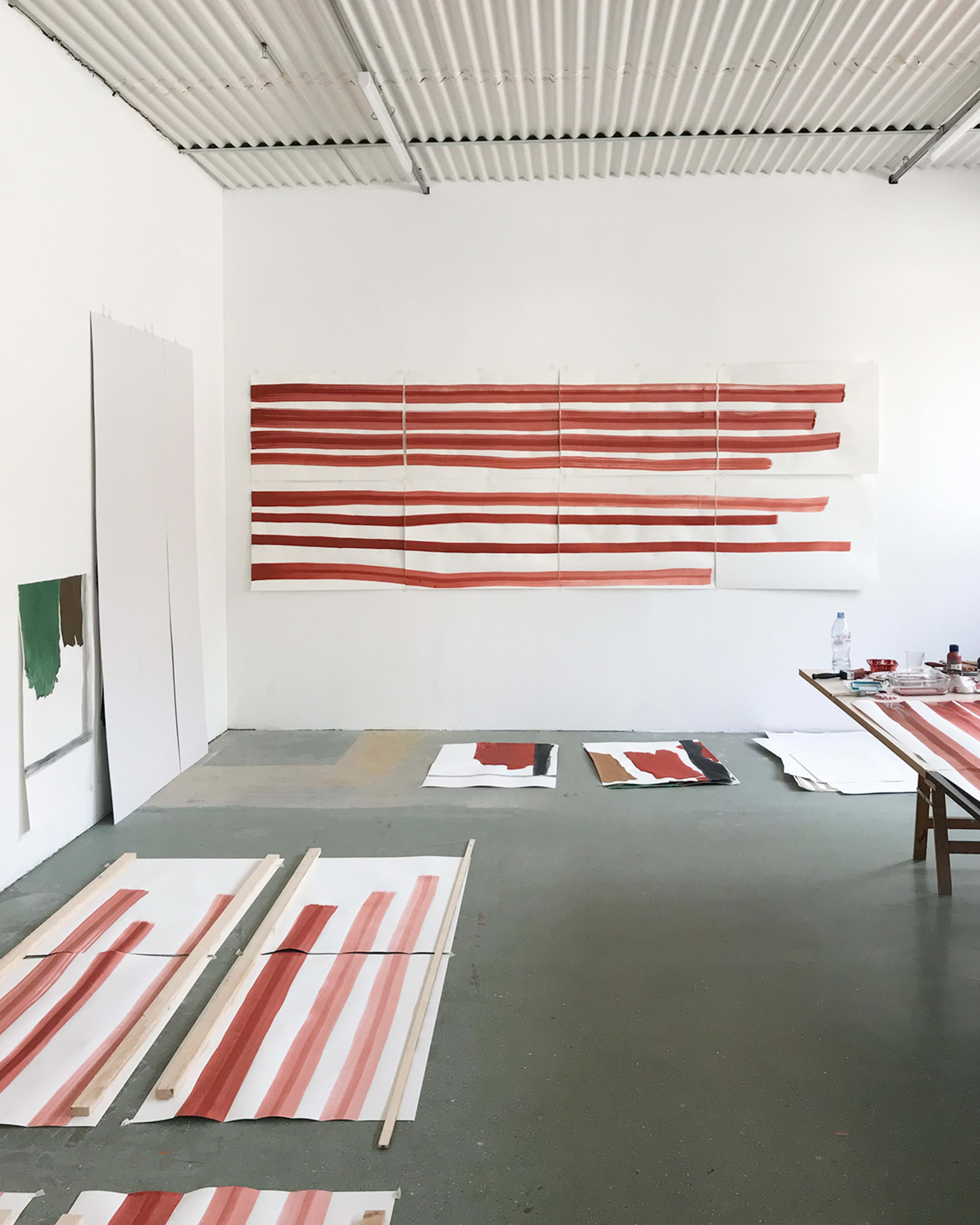
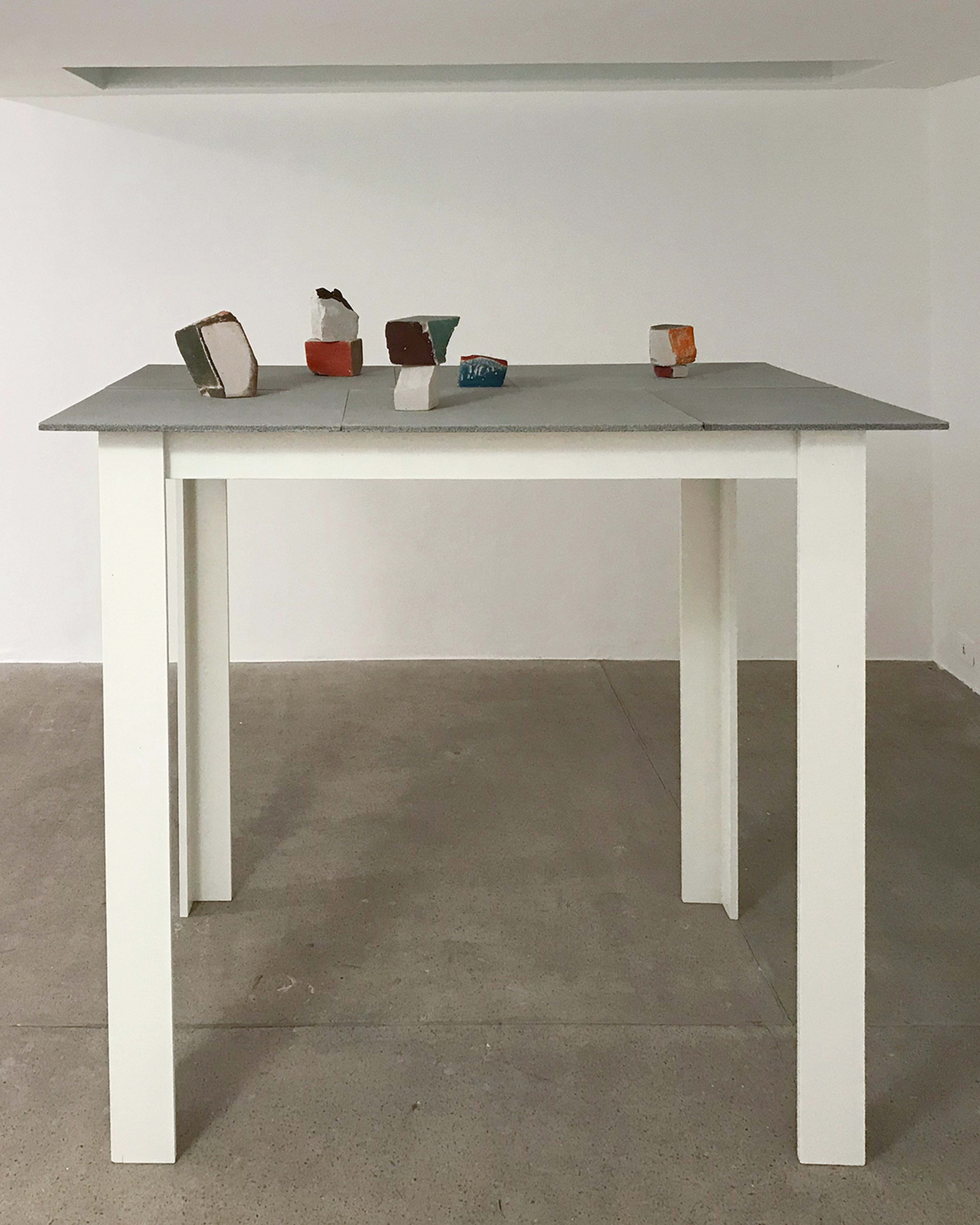
Photo: Lorenzo Palmieri
Five sculptures, small angular plaster objects, cut along straight lines, lay on a table of light‑colored wood and stand as outlines of human heads. They are part of Bächli’s most recent production and were first exhibited in her solo exhibition at Kunsthalle Karlsruhe in 2019: composed of flat, porous surfaces, whose imperfect conjunctions contain the fields of colors, they recall the very same palettes that occupy the walls, and present the very same painterly qualities they own on paper.
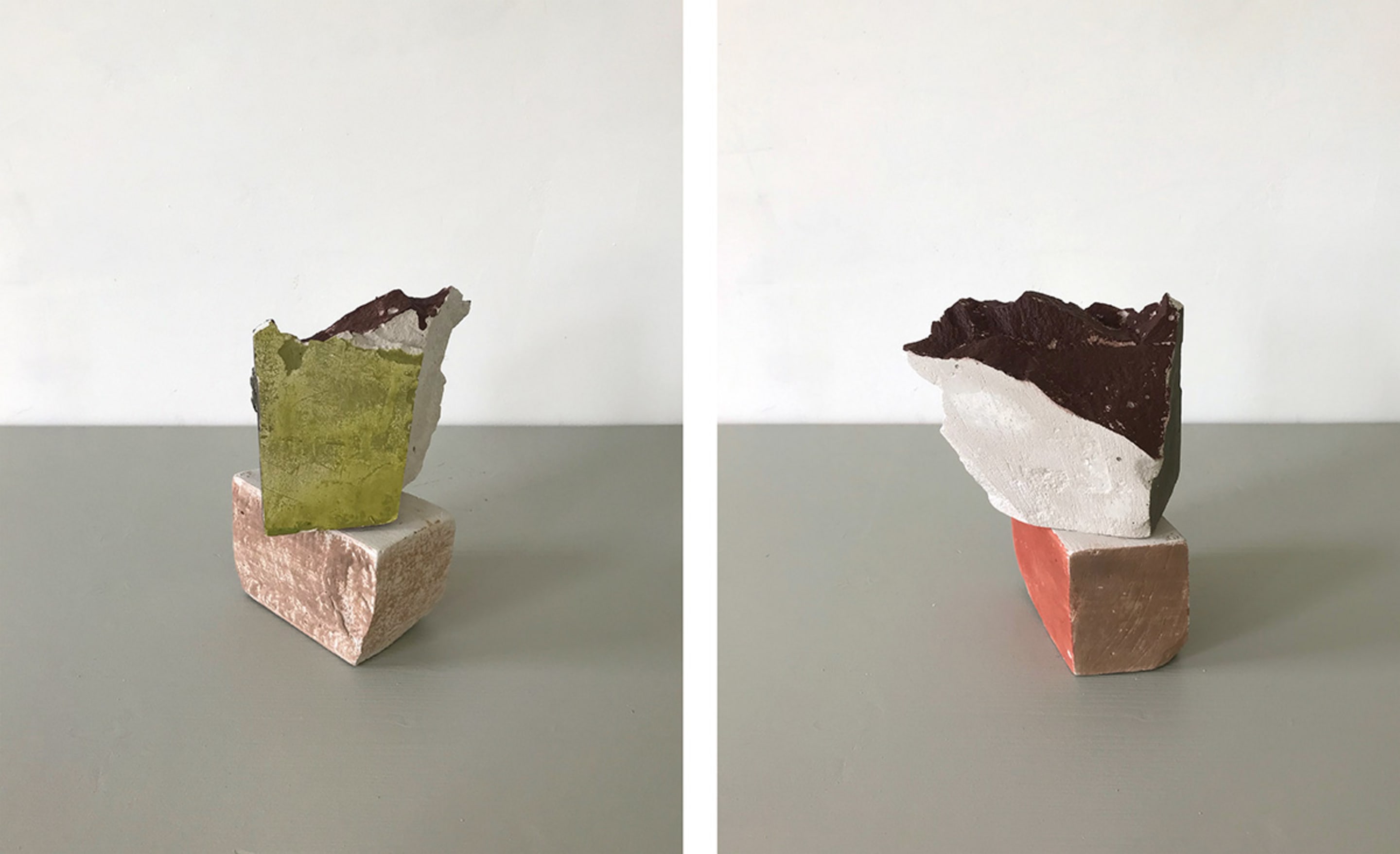
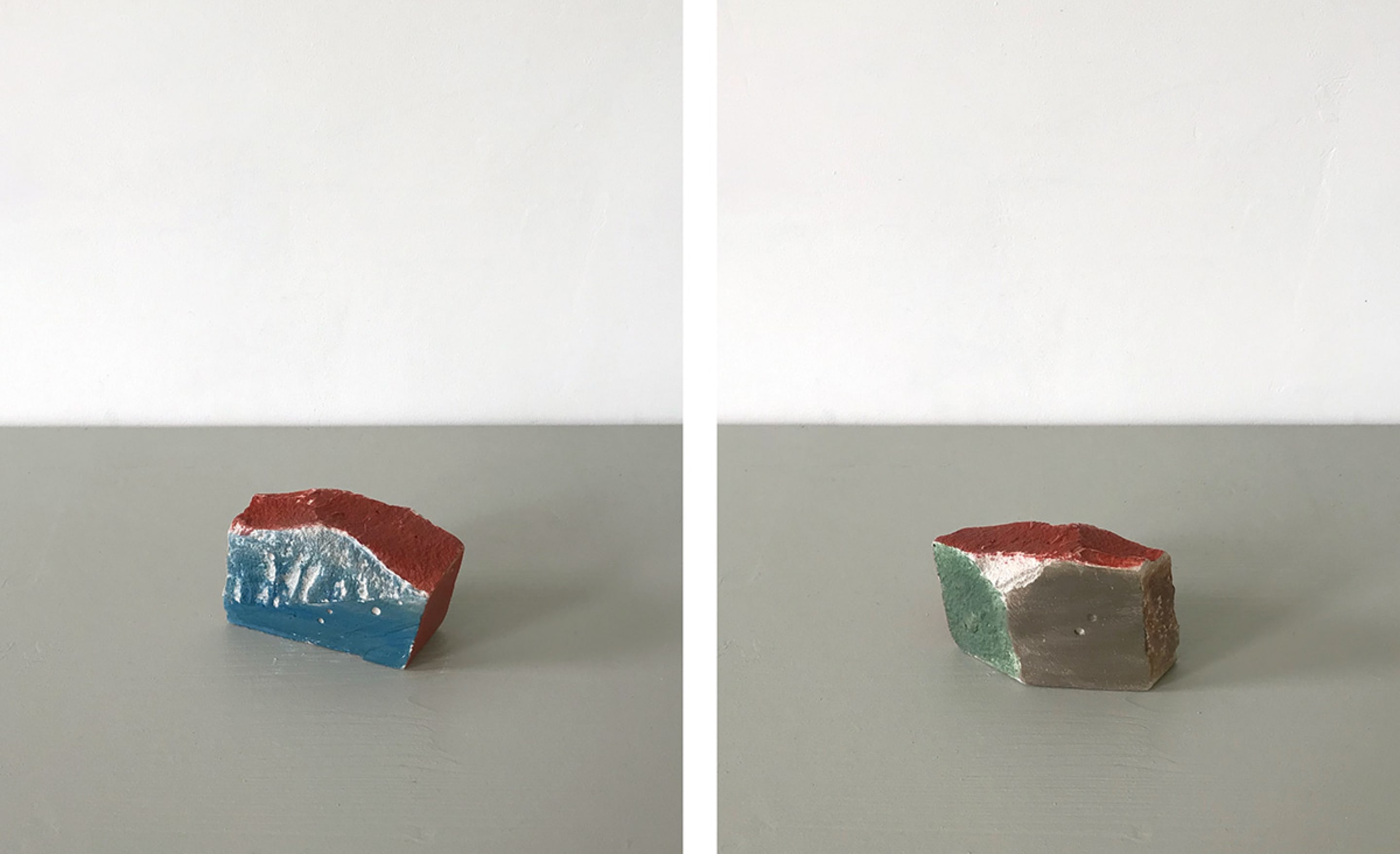
Jessica Stockholder – What is Normal
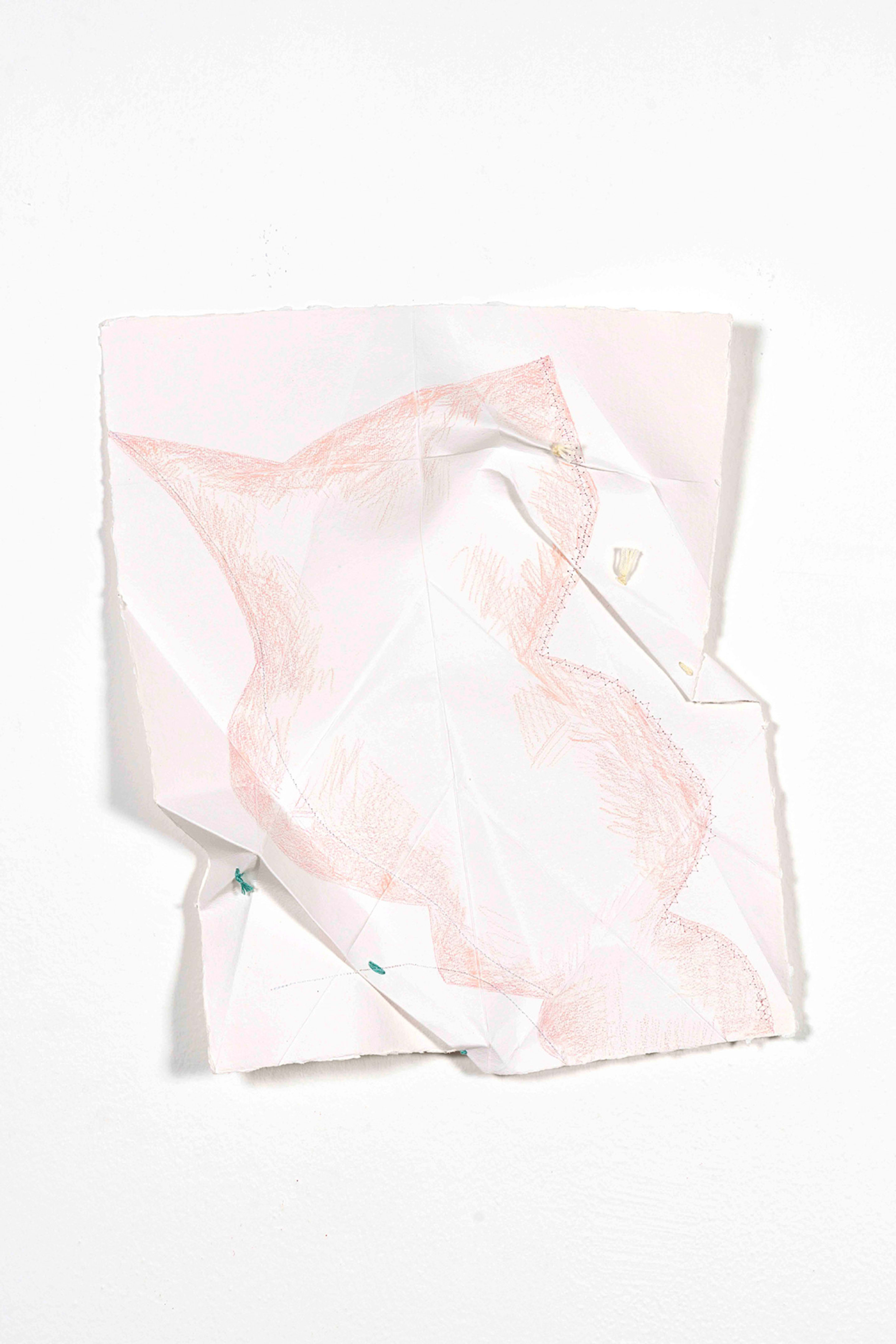
Watercolor paper, embroidery thread, pencil crayon
49,5 × 38,1 cm
In via Stradella 1 Jessica Stockholder presents a selection of Corona Virus homeworks, works produced during 2020, a year defined by dramatic shifts in the time and space of production. At the outset of the Covid-19 pandemic Stockholder was unable to access her studio and developed a way of working that was possible from her home as is indicated by their titles. Taking paper as a starting point, and working with the volumes that paper allows, these works were made by folding, sewing, gluing, and cutting, enacted on a variety of materials: paper, fabric, markers, pencils, threads, tulle, boot laces, and more. The works hang on walls in pictorial space, and yet they claim a sculptural dimension. This duality between picture making and sculptural form is consistent throughout Stockholder’s work.
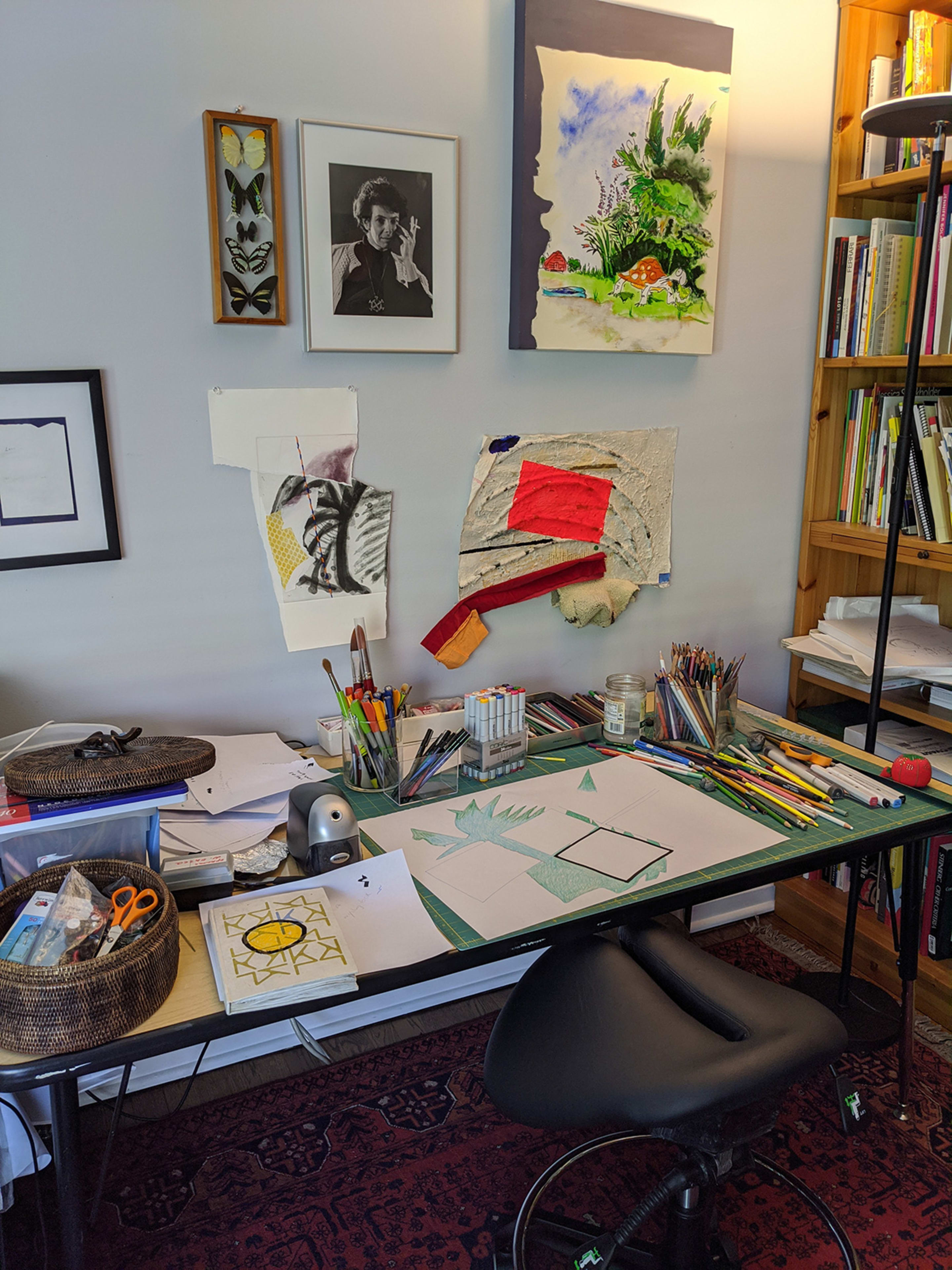
These works were made from home, not my studio which was locked down for the first five months of the pandemic, here in Chicago. I embraced the opportunity to find surprise in my work, and to celebrate the resilience of being human, while at the same time managing the intensity of feeling generated by events unfolding all over the world: fear, upset, empathy, anger, outrage, and great appreciation for so many.
– Jessica Stockholder, 2021
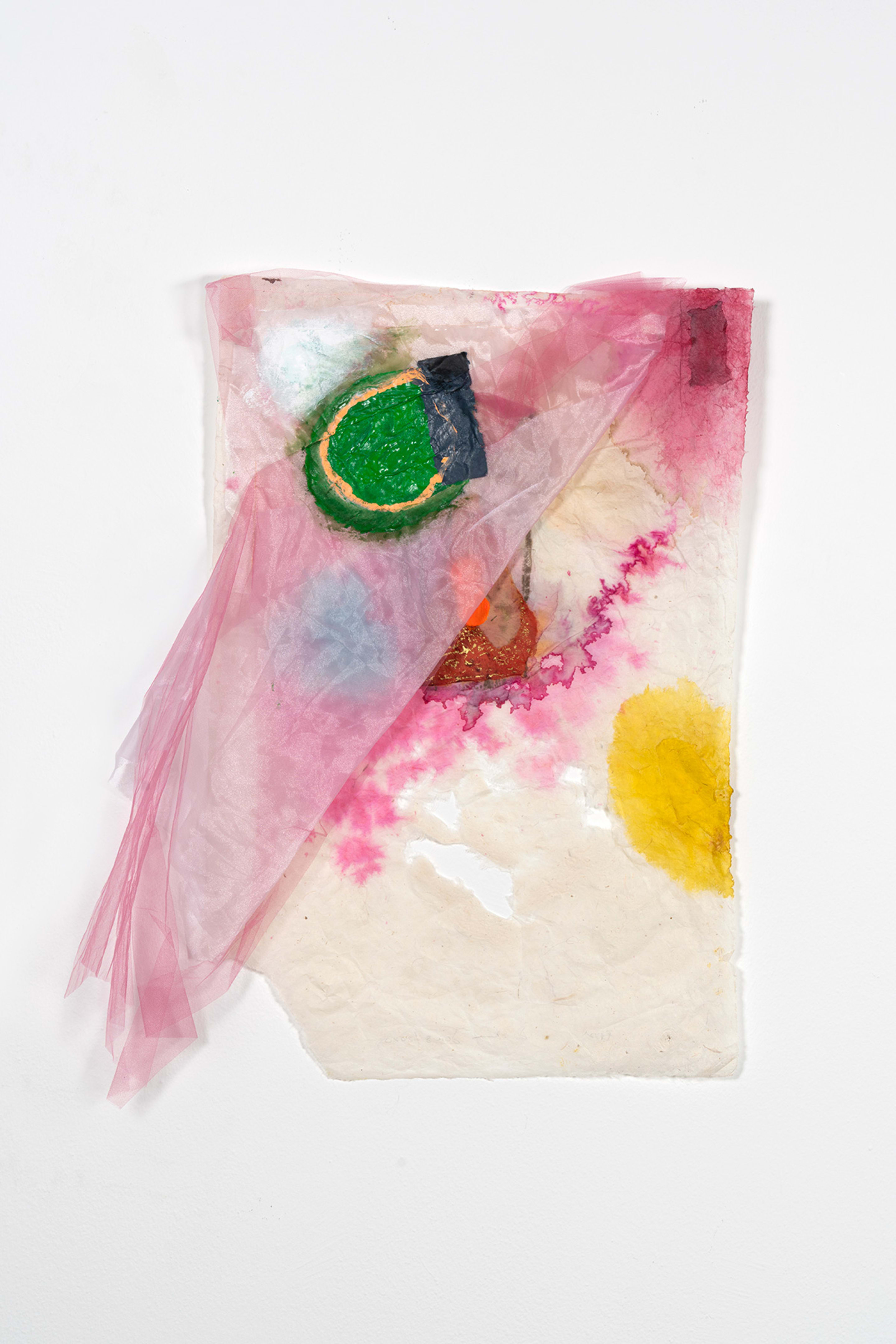
Chiffon, acrylic paint, fabric, Lokta paper
78,7 × 61 cm
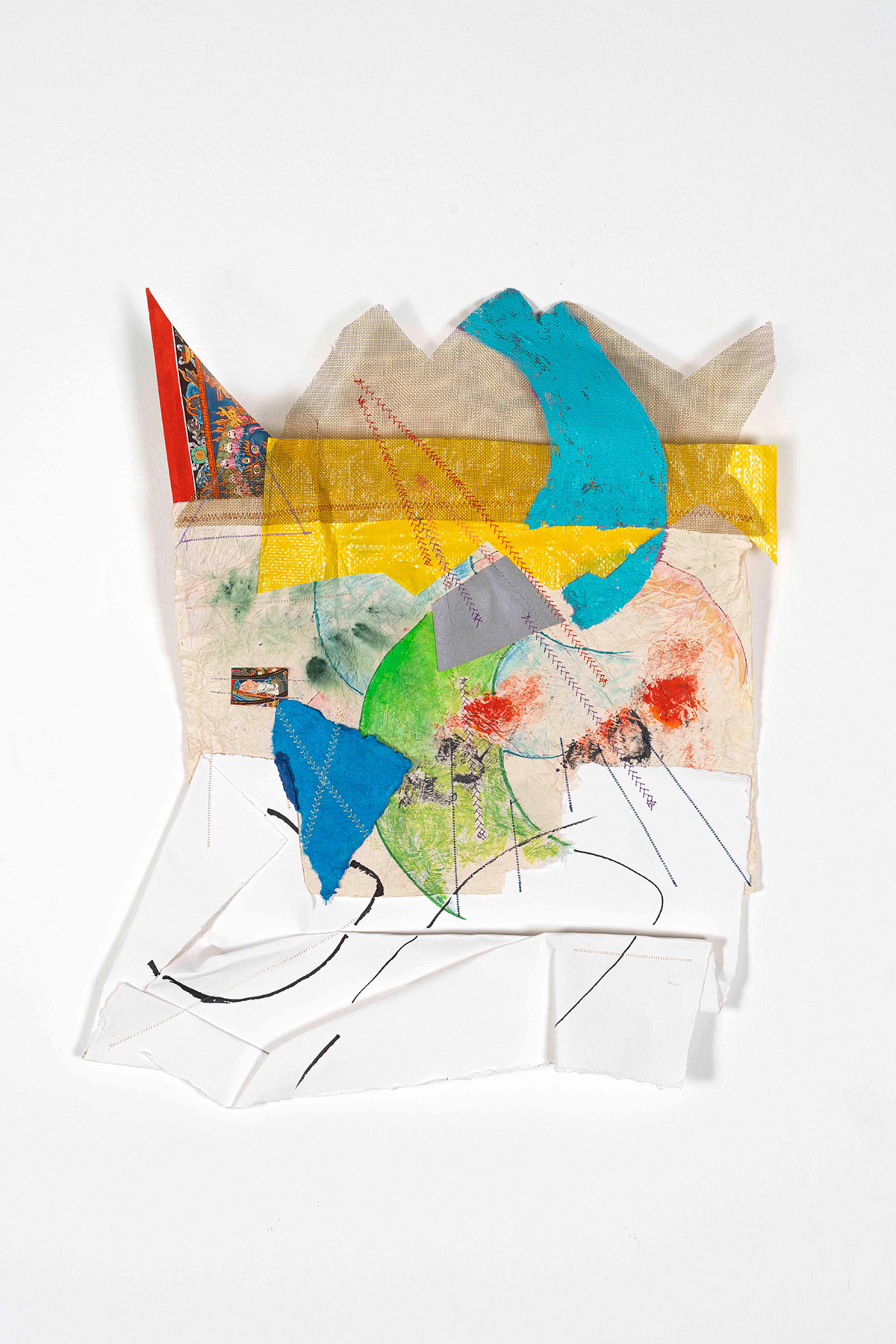
Lokta paper, watercolor paper, brass screen, thread, pencil, pencil crayon, acrylic paint, marker, thread, vinyl, fragment of Nepalese painting, plastic tarp
58,4 × 53,3 cm
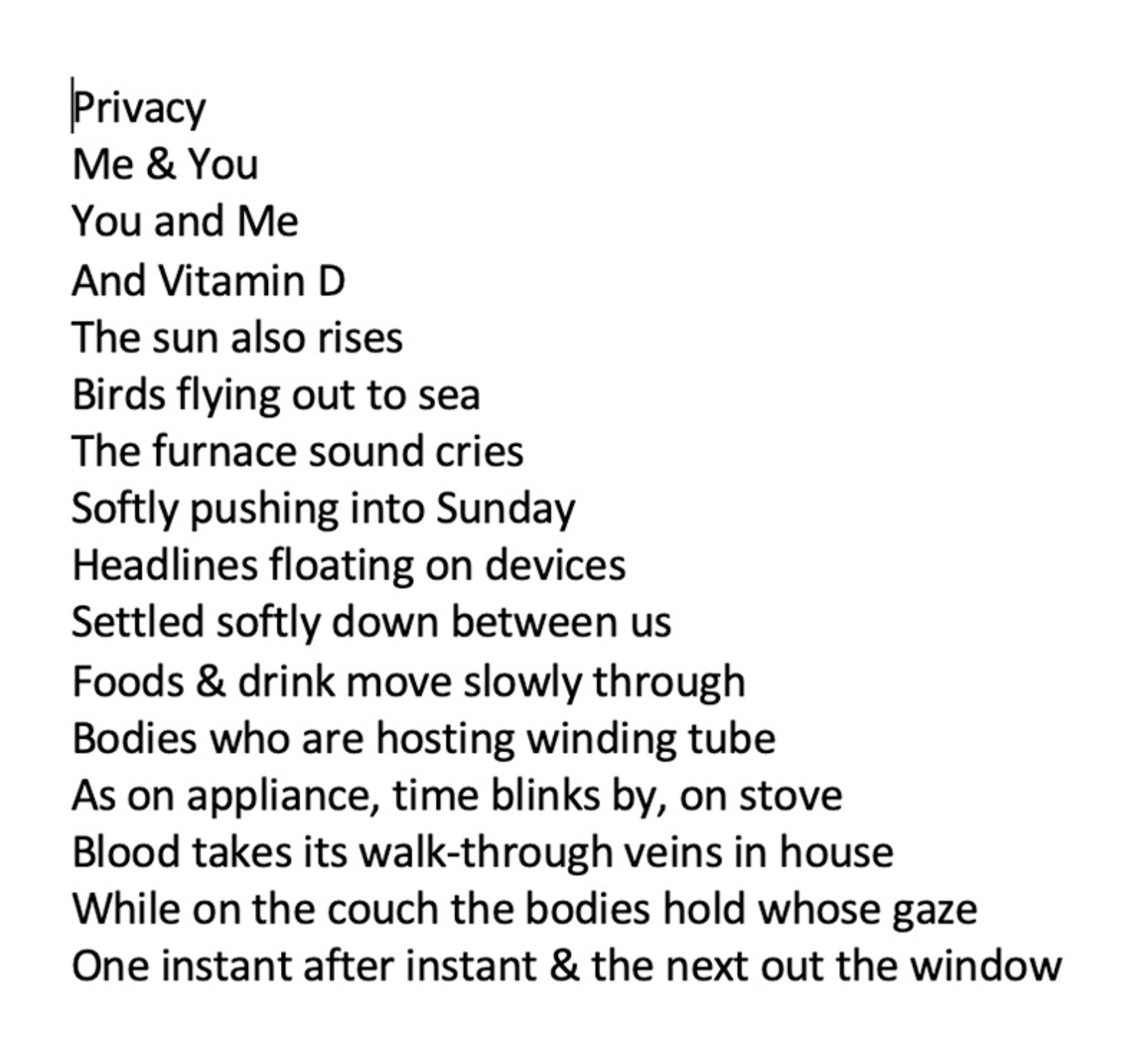
Holding hardware (2021) is also installed on the wall. The steel, skeleton–like structure is bolted to the wall while blue and orange ropes stretch out to the floor, to the adjacent wall, and to the ceiling, while also infiltrating the space of a closet that is usually inaccessible and hidden from sight. The closet now emptied of its objects, and no longer functioning as a closet, is filled with a painted shape that it fails to contain. Holding hardware is related to Stockholder’s Assists, a recent series of sculptural works which can’t stand up on their own and must be strapped to some kind of a prop, such as a piece of furniture, a car, a lawn mower… anything that will serve to keep the sculpture upright. The dependence that is foregrounded by the Assists is analogous to the need that conventional paintings have for the support provided by the walls they hang on. Holding hardware is hungry for the space around it, and does not exist without its various forms of attachment.
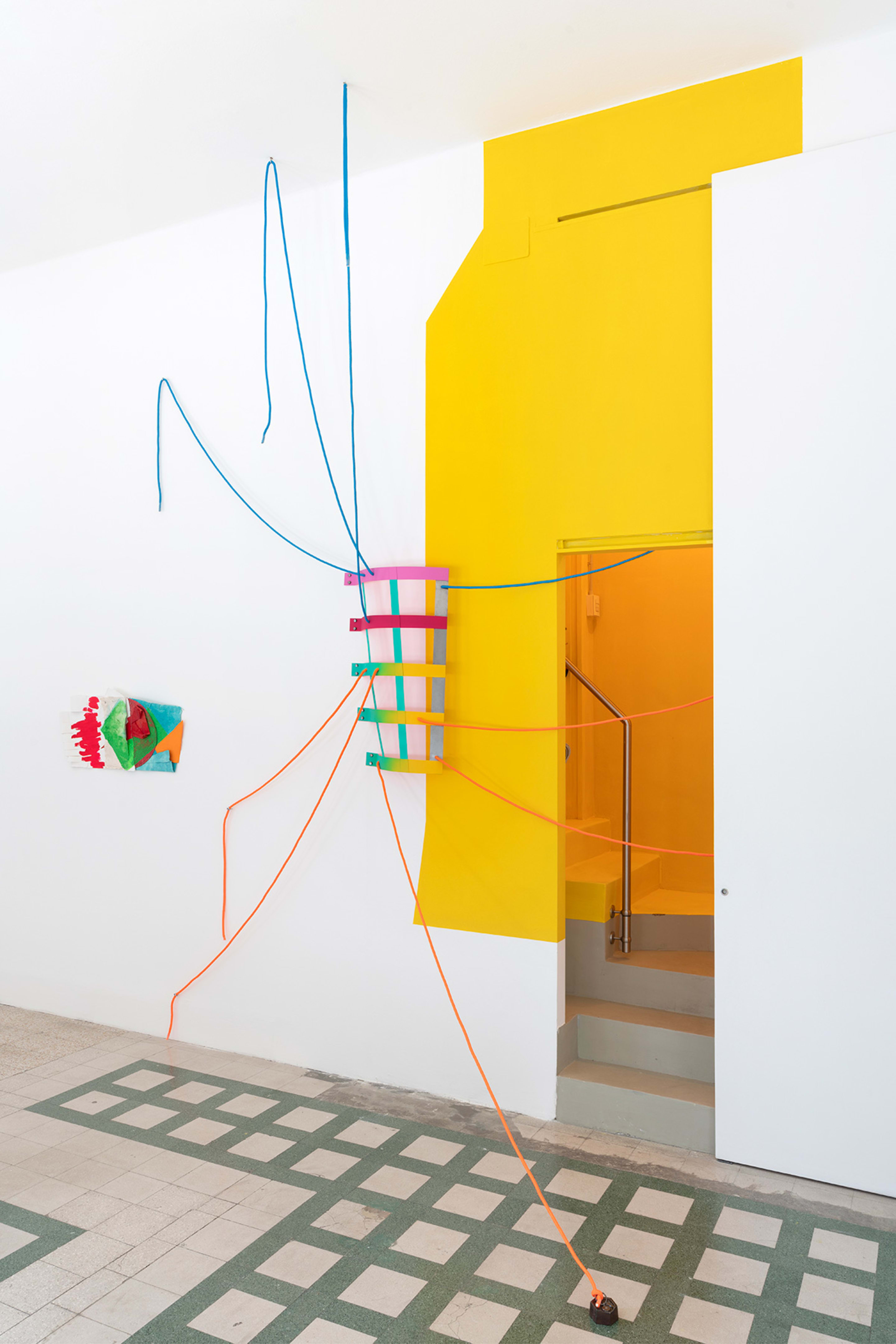
Photo: Lorenzo Palmieri
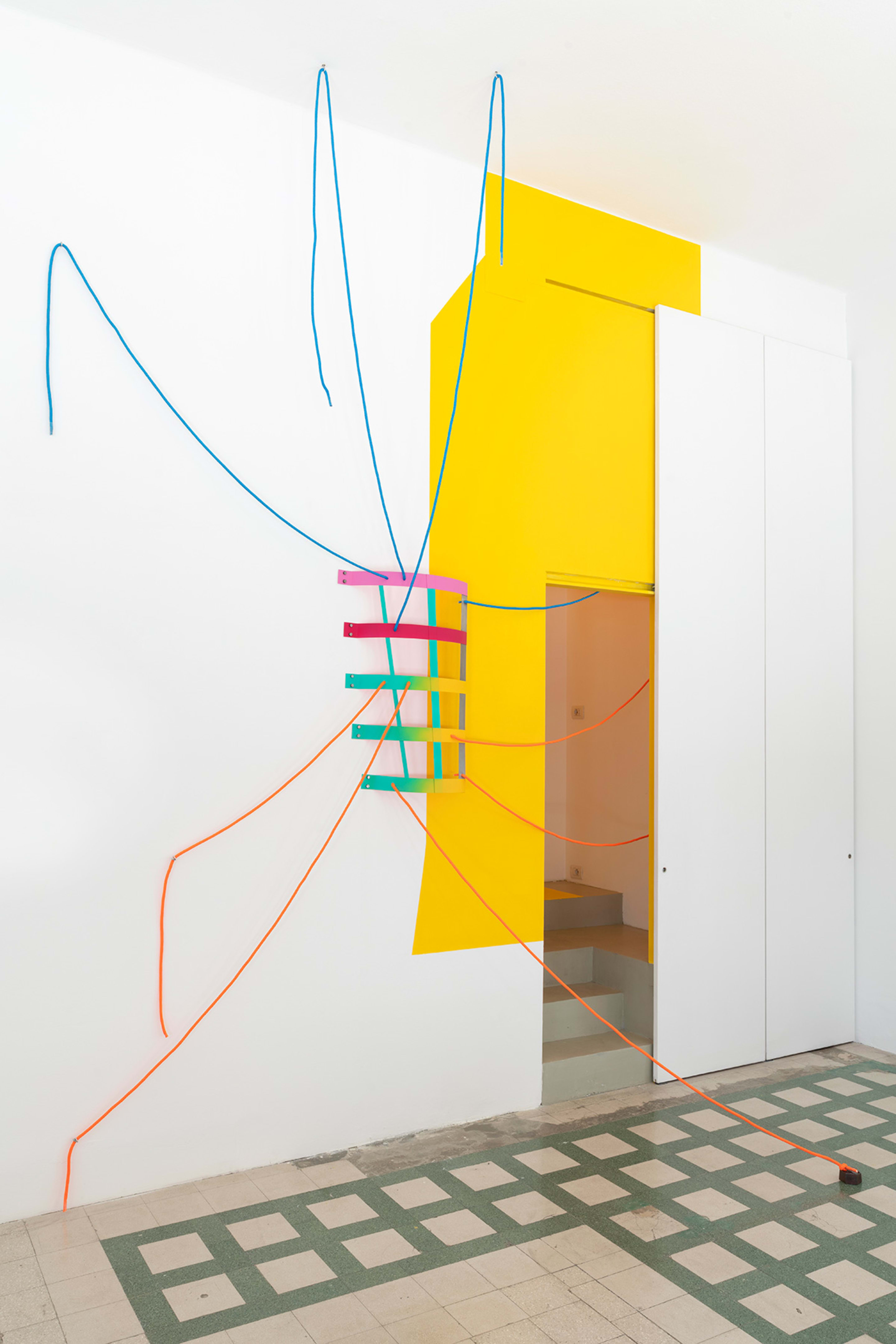
Steel, paint, rope, hardware, iron weight
92,6 × 59,3 × 15,5 cm (sculpture; overall dimensions variable)
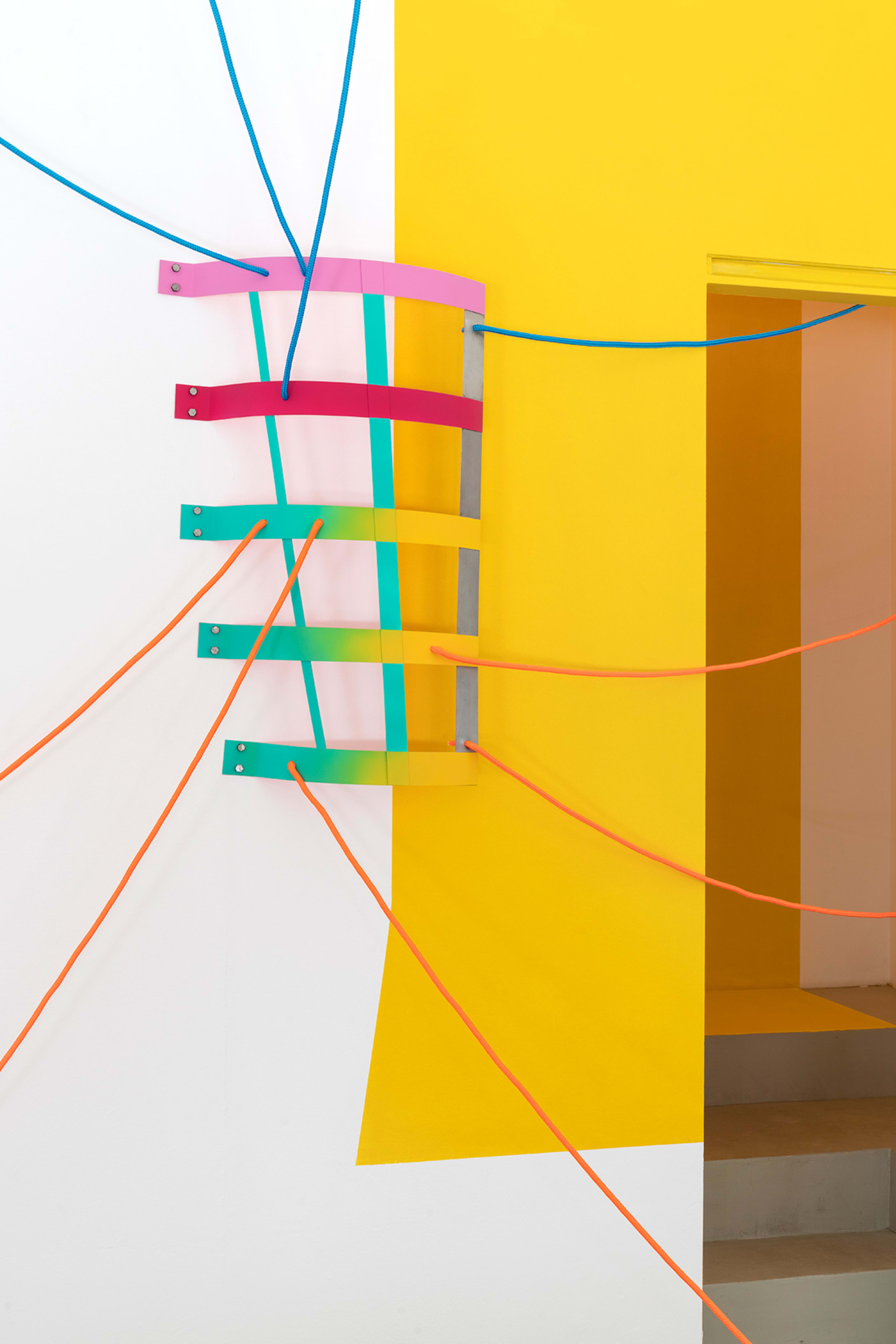
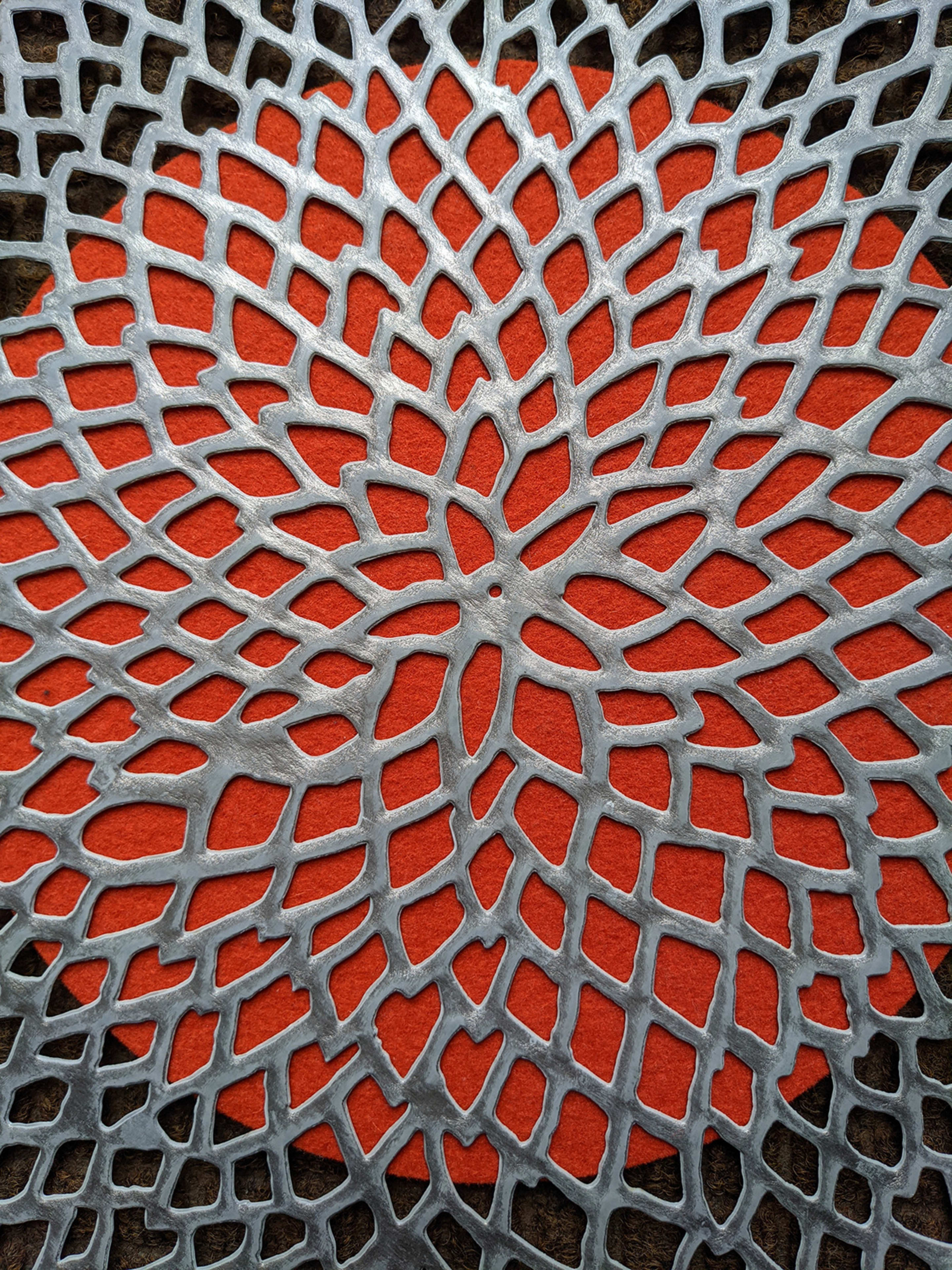
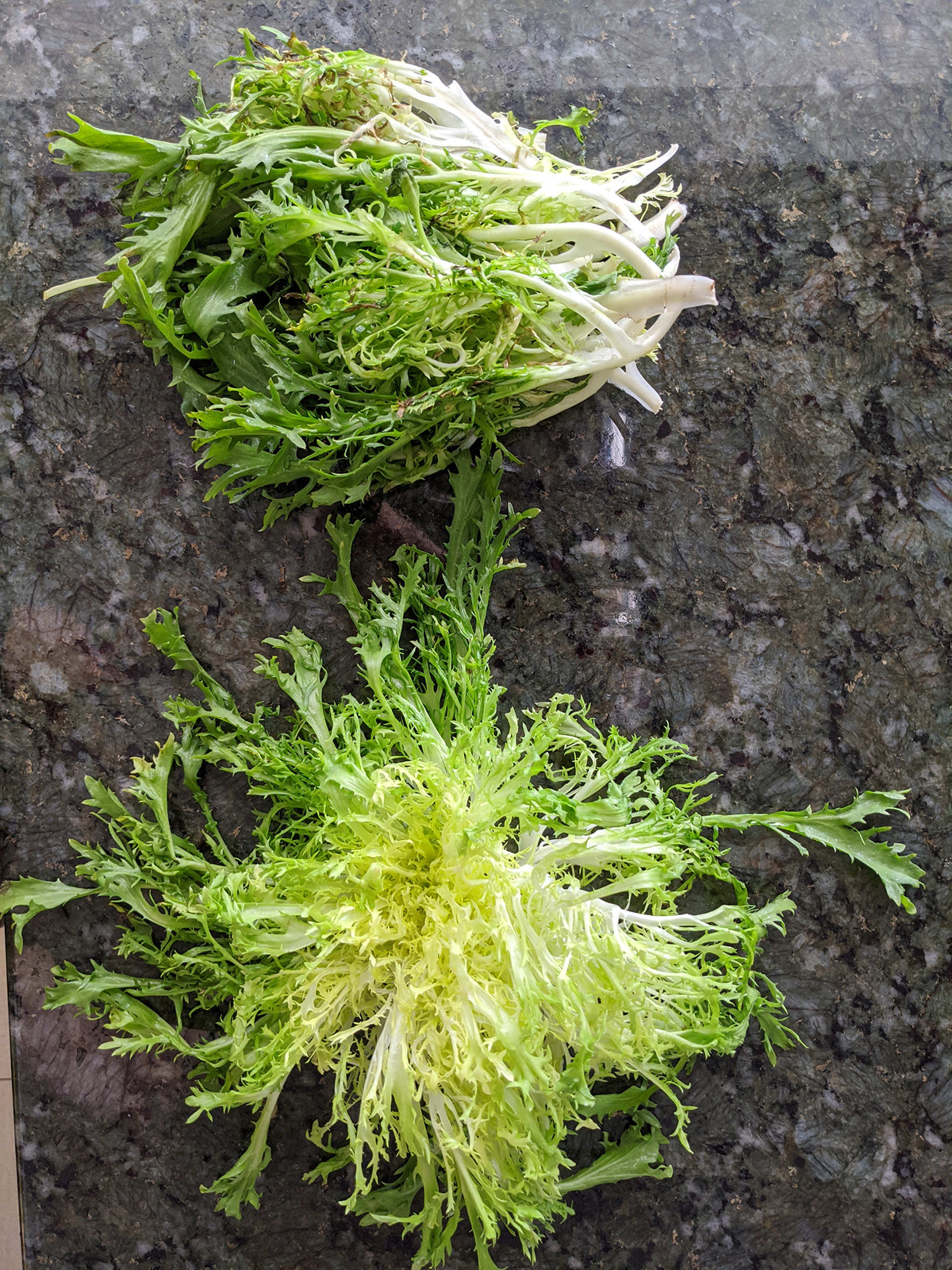
Allyson Strafella – viveka
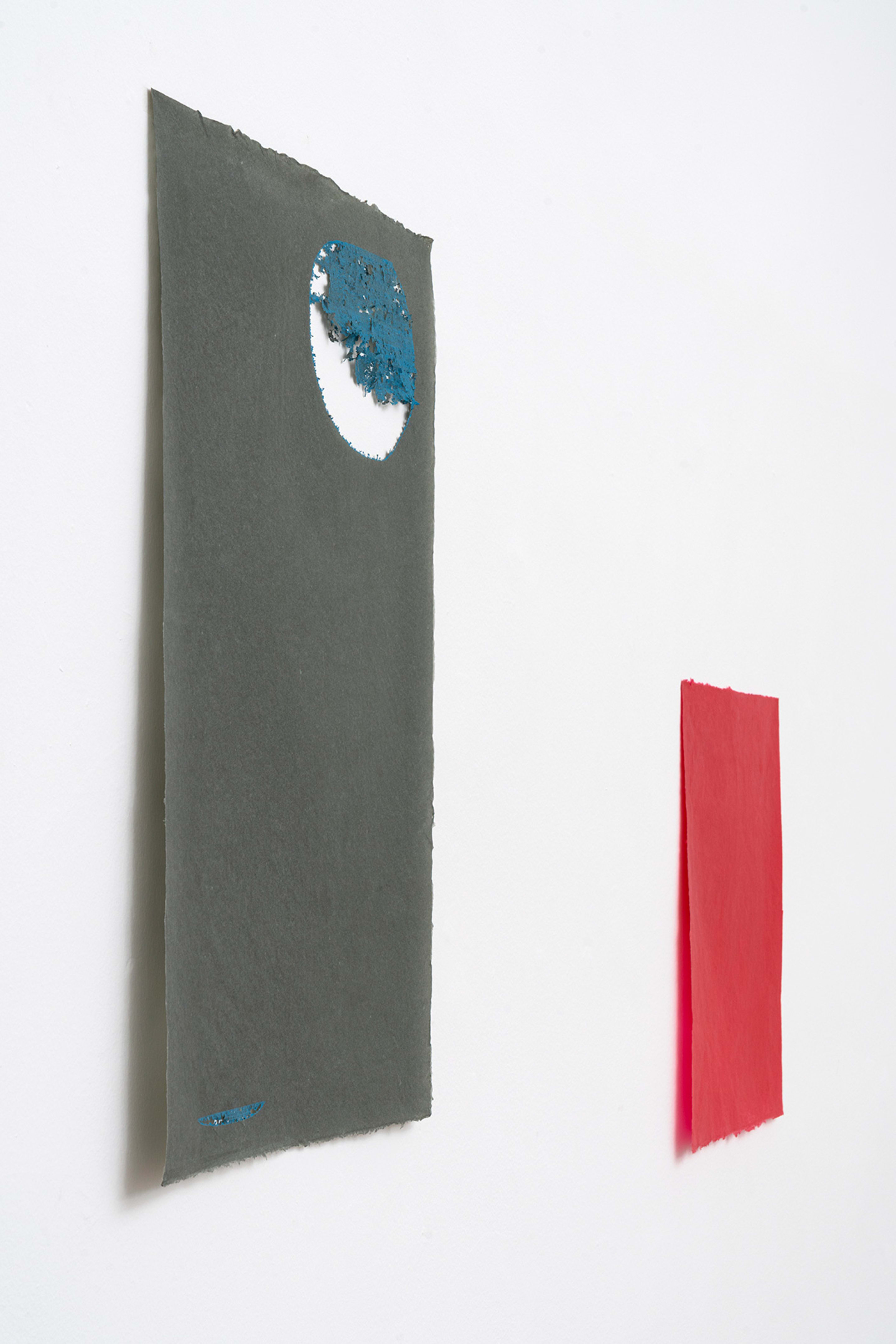
Photo: Lorenzo Palmieri
The title of the show, viveka, comes from the ancient Pali language. It is a term that for Strafella encompasses her experience of this past year. Though there are several translations, the one that resonates for Strafella speaks to the concepts of “seclusion + absorption” (in the words of Buddhist teacher Gil Fronsdal). This past year has been about sheltering in place, staying home, and being alone with ourselves due to the pandemic. Though uncomfortable for many, the time in seclusion from the world provided an opportunity to become absorbed in practice – the practice of mediation, the practice of drawing. Strafella’s studio has been a welcomed refuge to engage with this concept of seclusion + absorption.
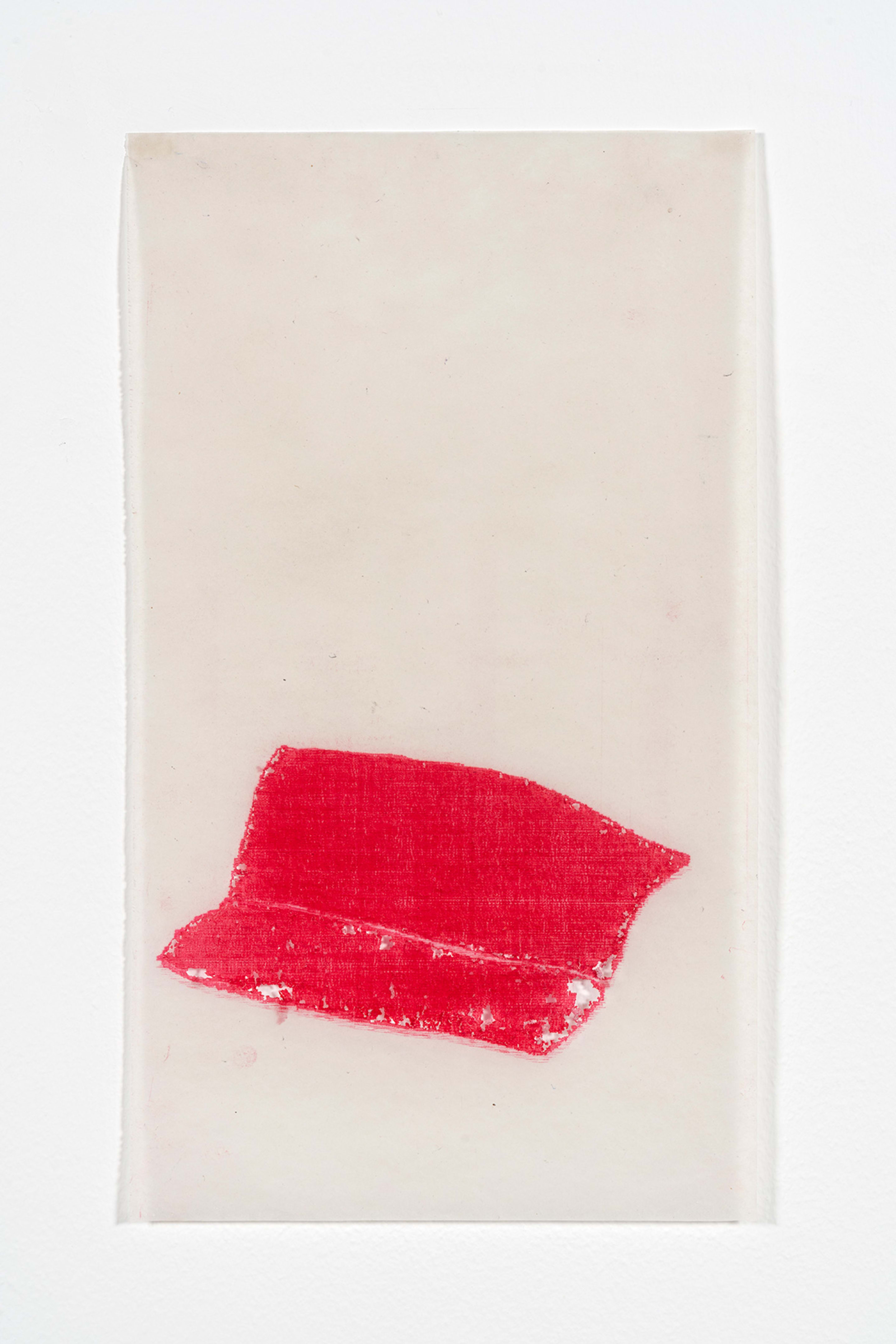
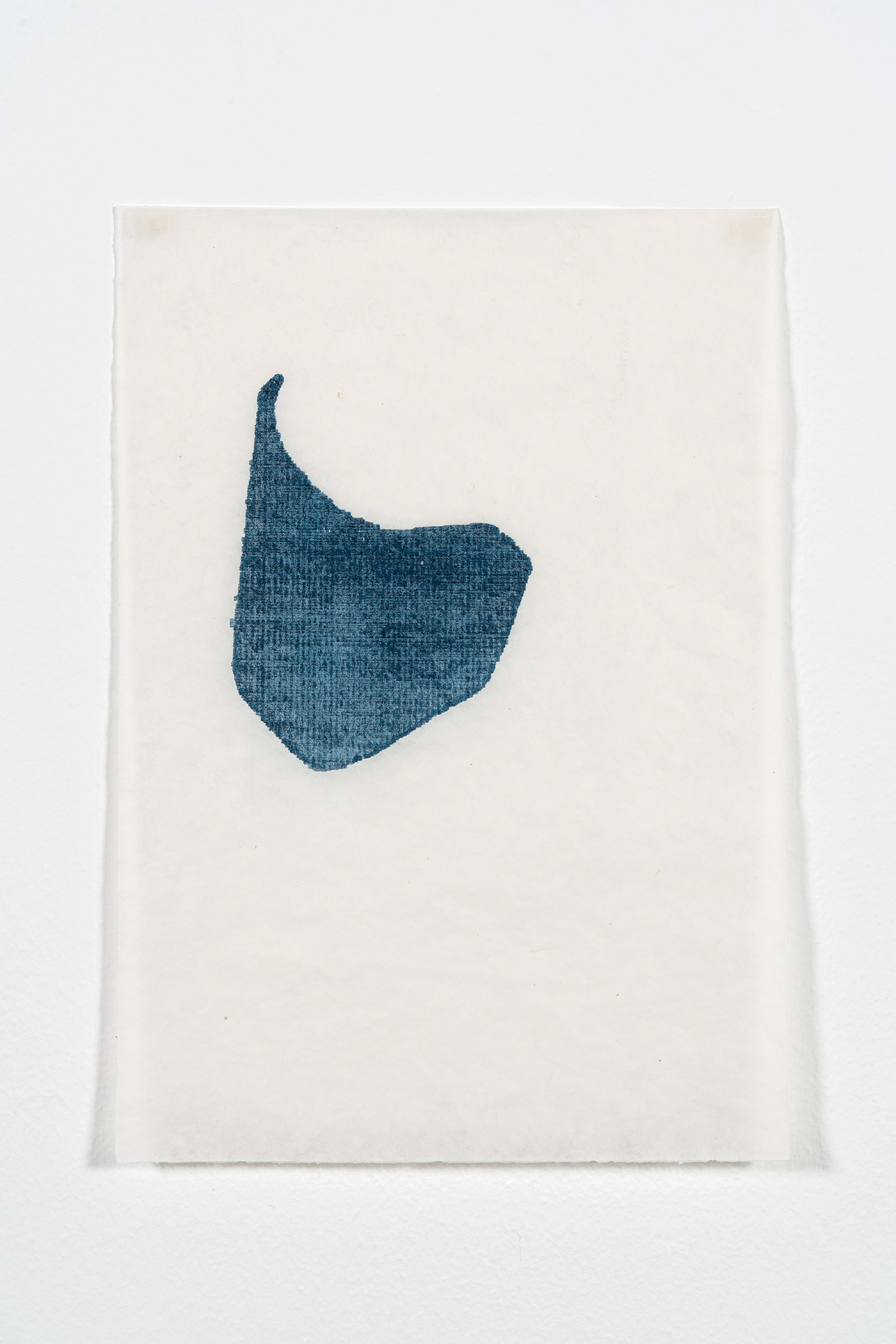
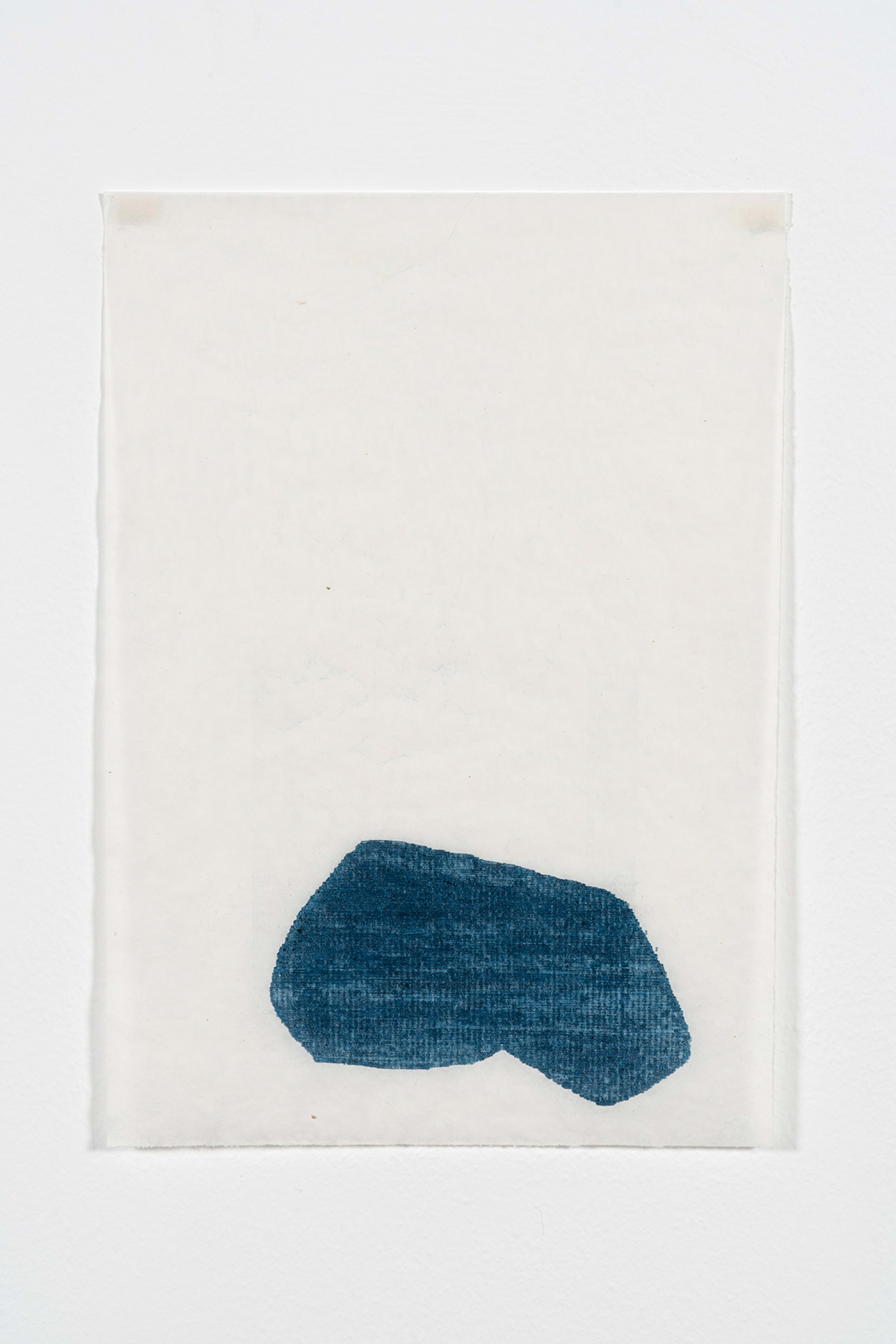
In 2003, I worked on an organic farm where I drove a tractor, marking the land with patterns very similar to those I produced with a typewriter. It was a liberating experience about what drawing is. After years of considering my drawing space as a form of landscape, drawing on the scale of 25-acres had a special meaning for me. There are no limits to drawing in my mind, and it is with this idea of an expanded field, literally and rhetorically, that I engage with the world through my work.
– Allyson Strafella, 2019
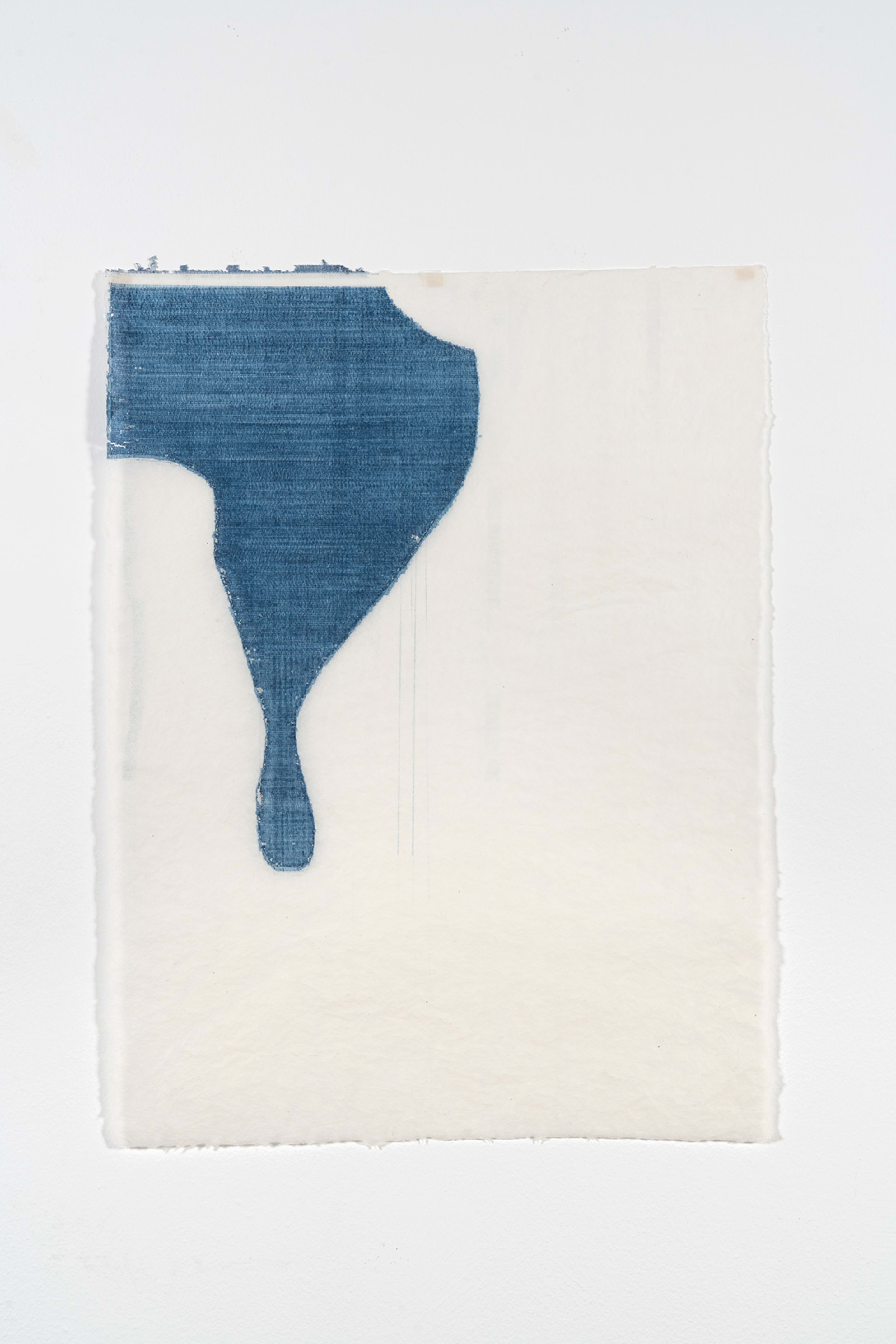
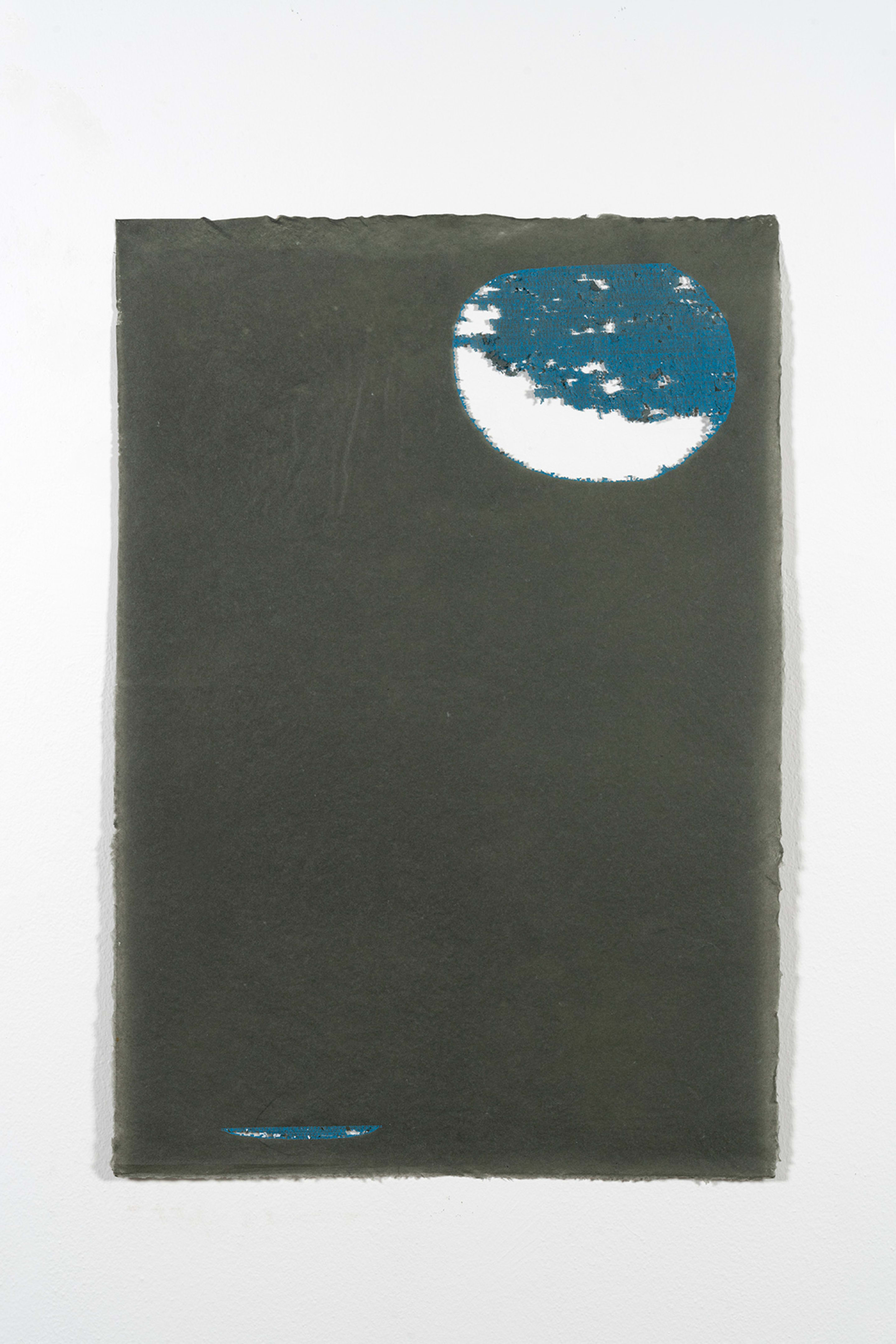
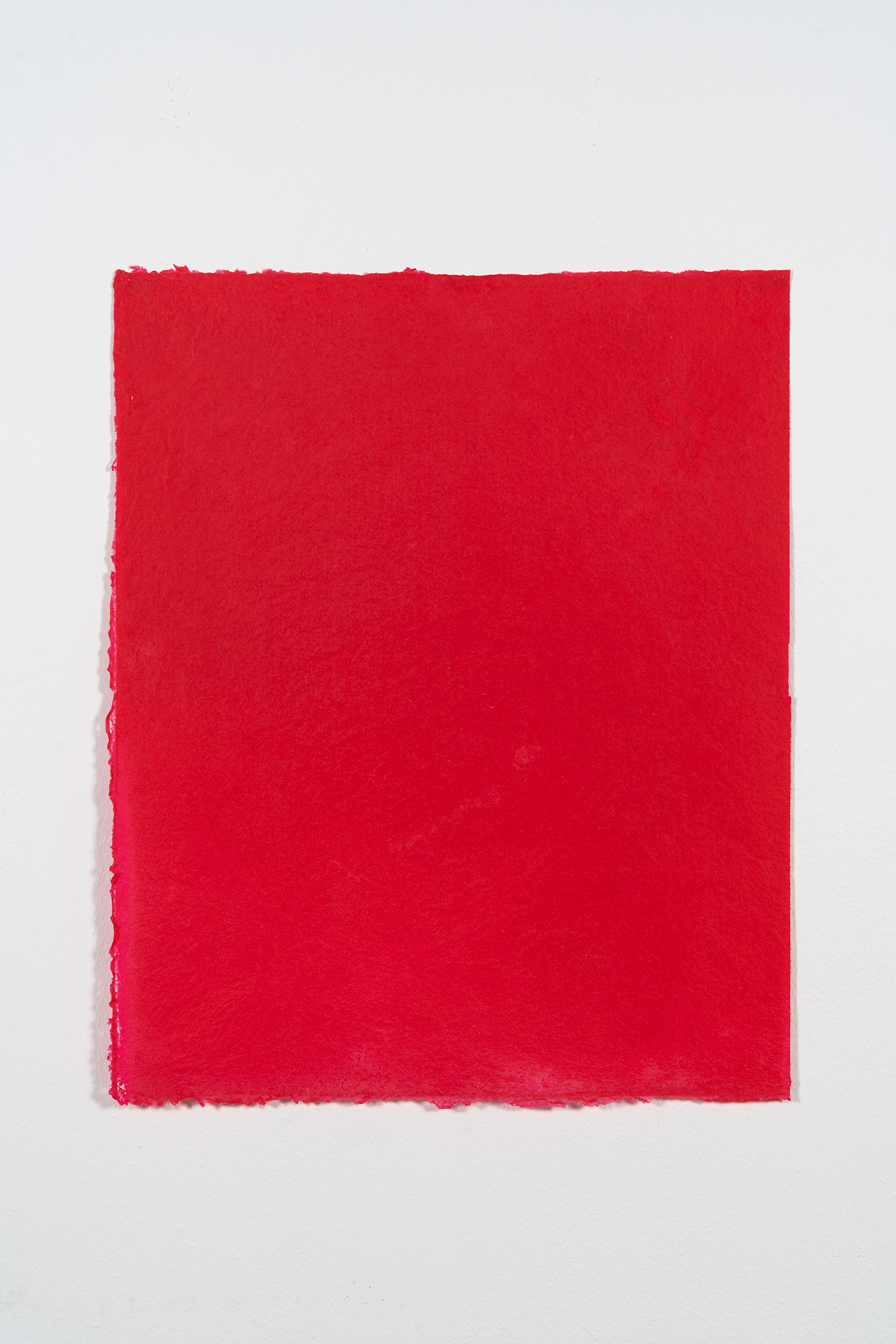
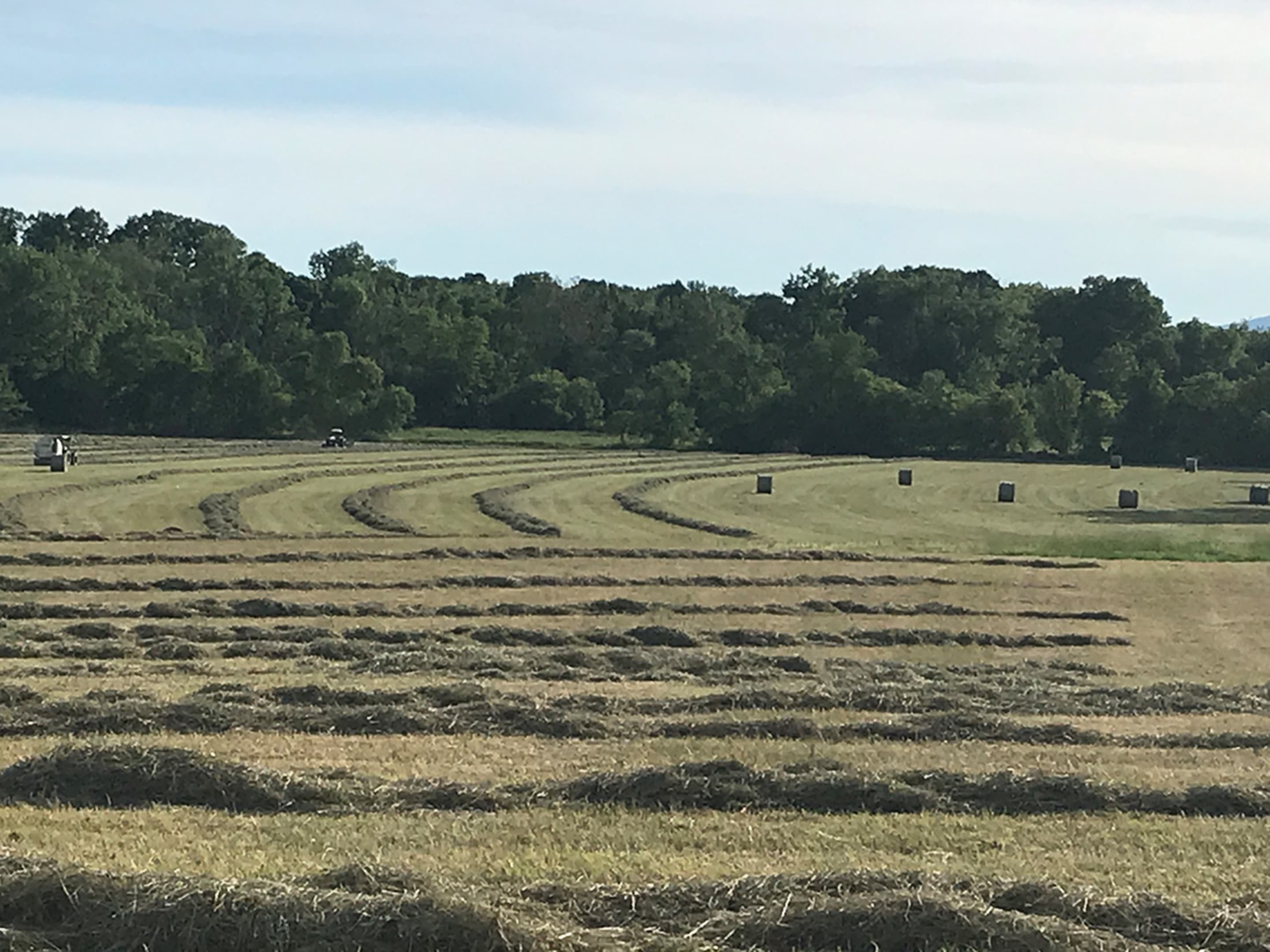
It may be that when we no longer know what to do we have come to our real work, and that when we no longer know which way to go we have come to our real journey. The mind that is not baffled is not employed. The impeded stream is the one that sings.
– Wendel Berry, Our Real Work
